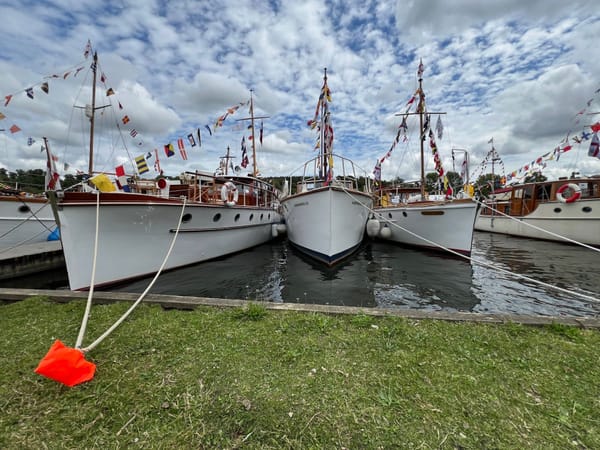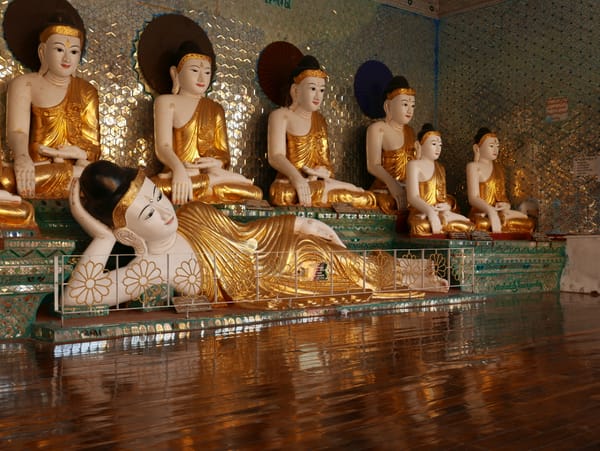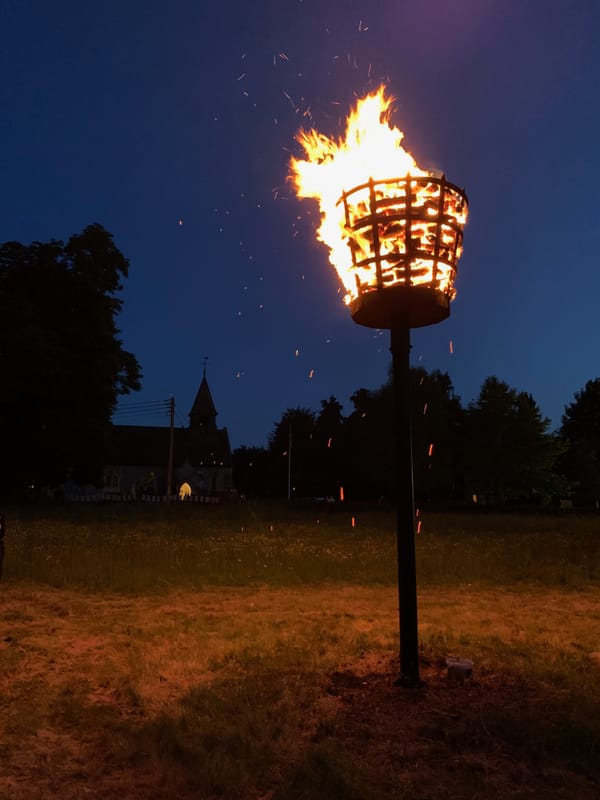Bali — Pura Tirta Empul (Tirta Empul Temple), Bali, Indonesia
Visiting a working temple
September 2015
Pura Tirta Empul (Tirta Empul Temple), also called the Water Temple, has to be the best temple I visited during my time in Bali. A fantastic place. I liked it because it was the only temple I saw in use. It was full of tourists and, more importantly, worshippers.
The temple is a UNESCO site (listed on 6 July 2012), and the inscription reads:
"The Cultural Landscape of Bali Province: The Subak System as a manifestation of the Tri Hita Karana Philosophy, consist of Supreme Water Temple Pura Ulun Danu Batur and Lake Batur, Subak Landscape of Pakerisan Watershed, Subak Landscape of Catur Angga Batukaru, and Royal Temple of Taman Ayun has been inscribed upon the World Heritage List of the Convention concerning the Protection of the World Cultural and Natural Heritage. Inscription on this List confirms the outstanding universal value of a cultural or natural property which deserves protection for the benefit of all humanity."
There were rather strict entry criteria.
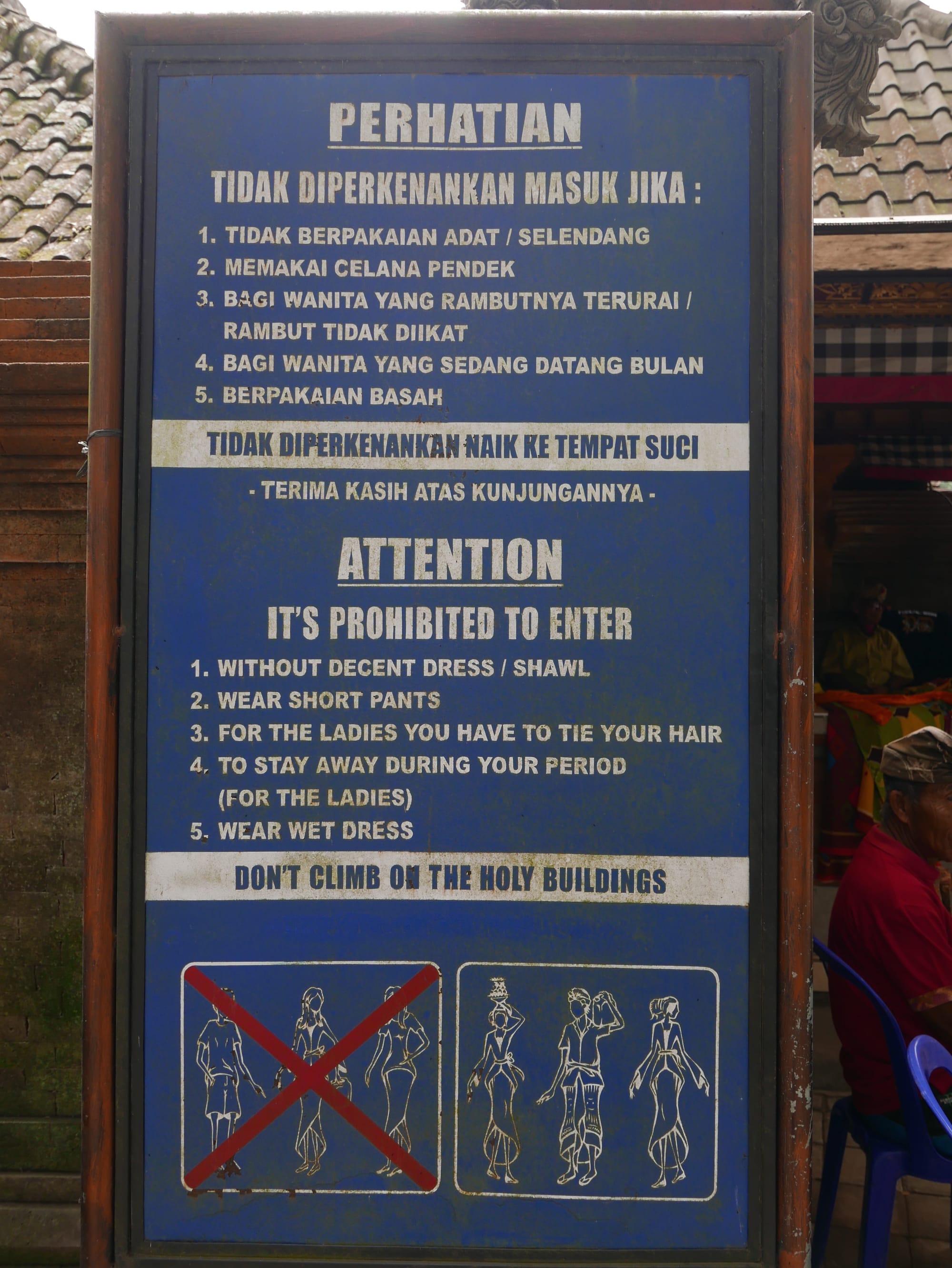
And I had to wear a yellow sash.
The temple, which dates from 960 AD, is dedicated to the Hindu God Vishnu and is a bathing place (pertirtaan) with several springs and pools and a rather impressive and old Lingga-yoni. The temple also had some stunning architecture and fantastic sculptures.
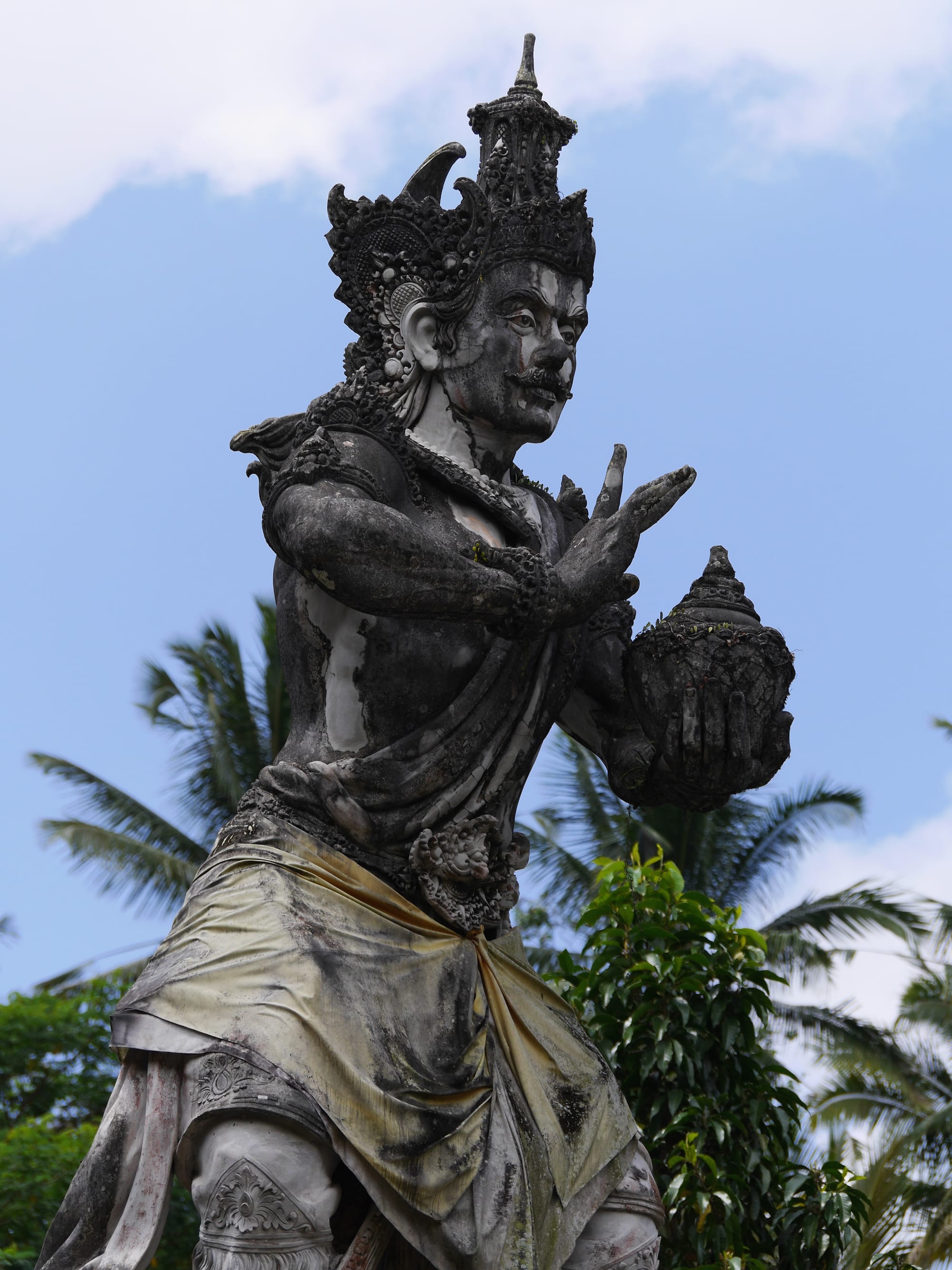
As with all other temples I had visited in Bali, there was a split gate entrance (candi bentar).
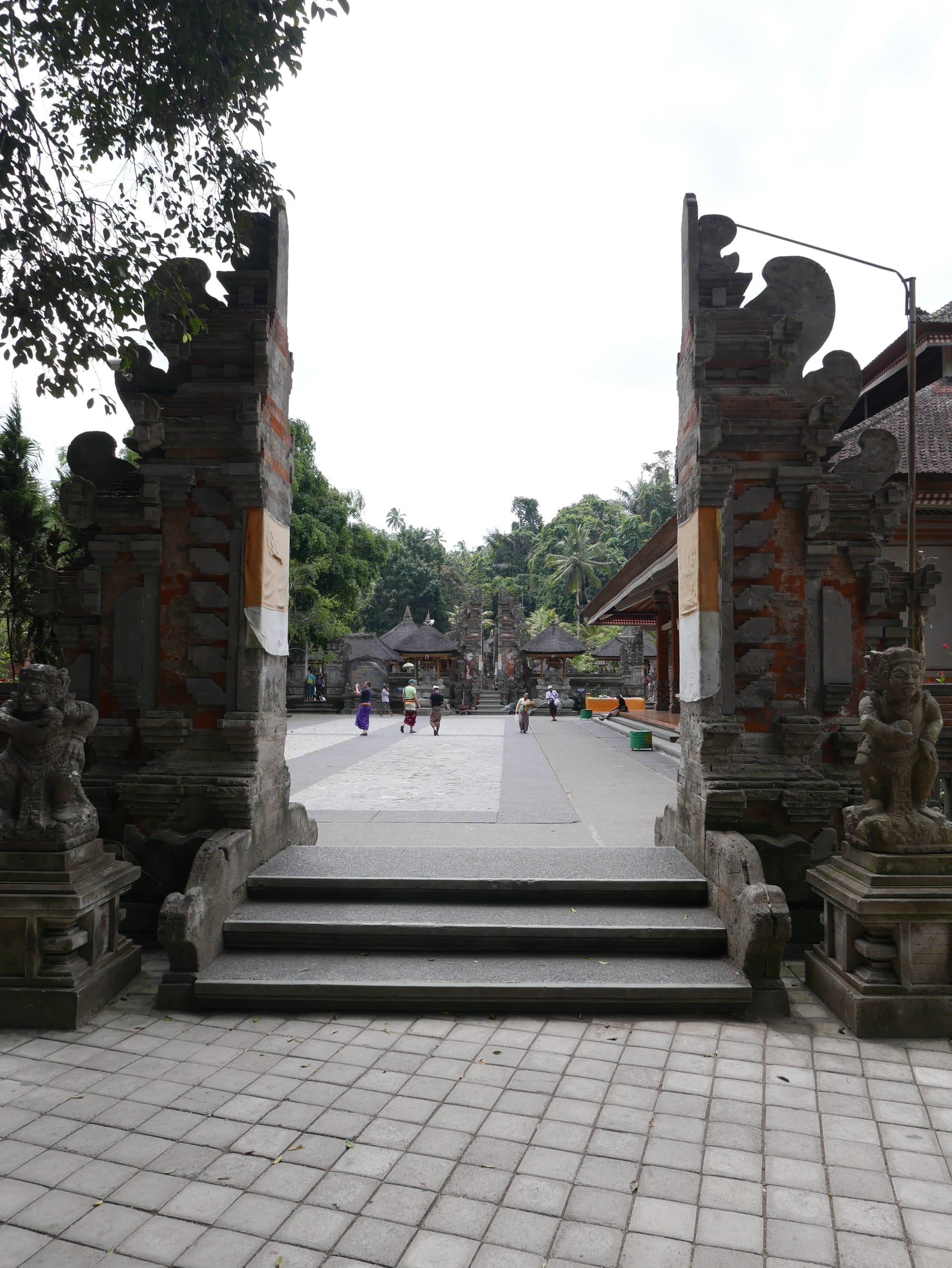
There was also a fine example of a roofed tower gate (kori agung).
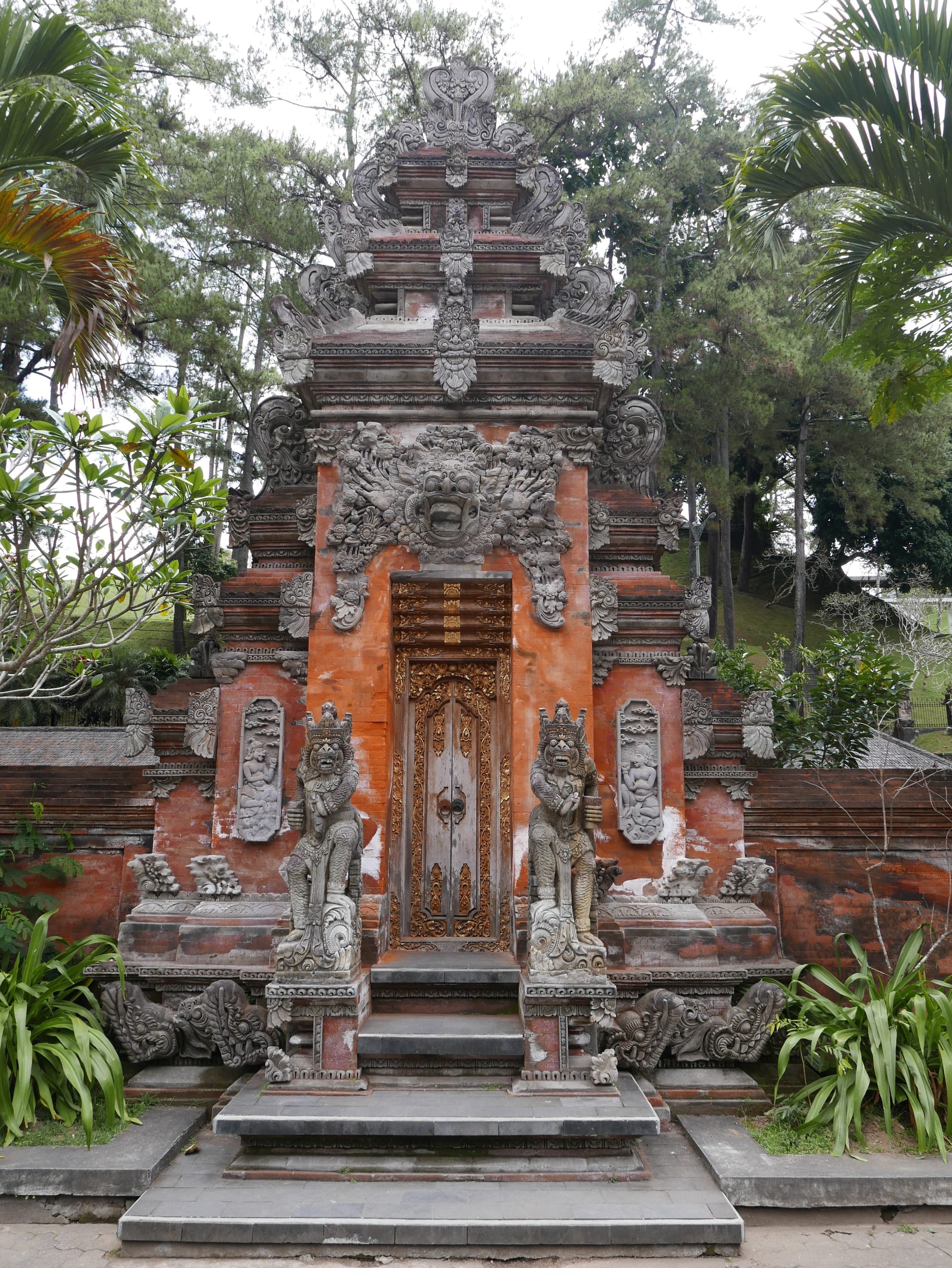
Which also has some stunning sculptures.
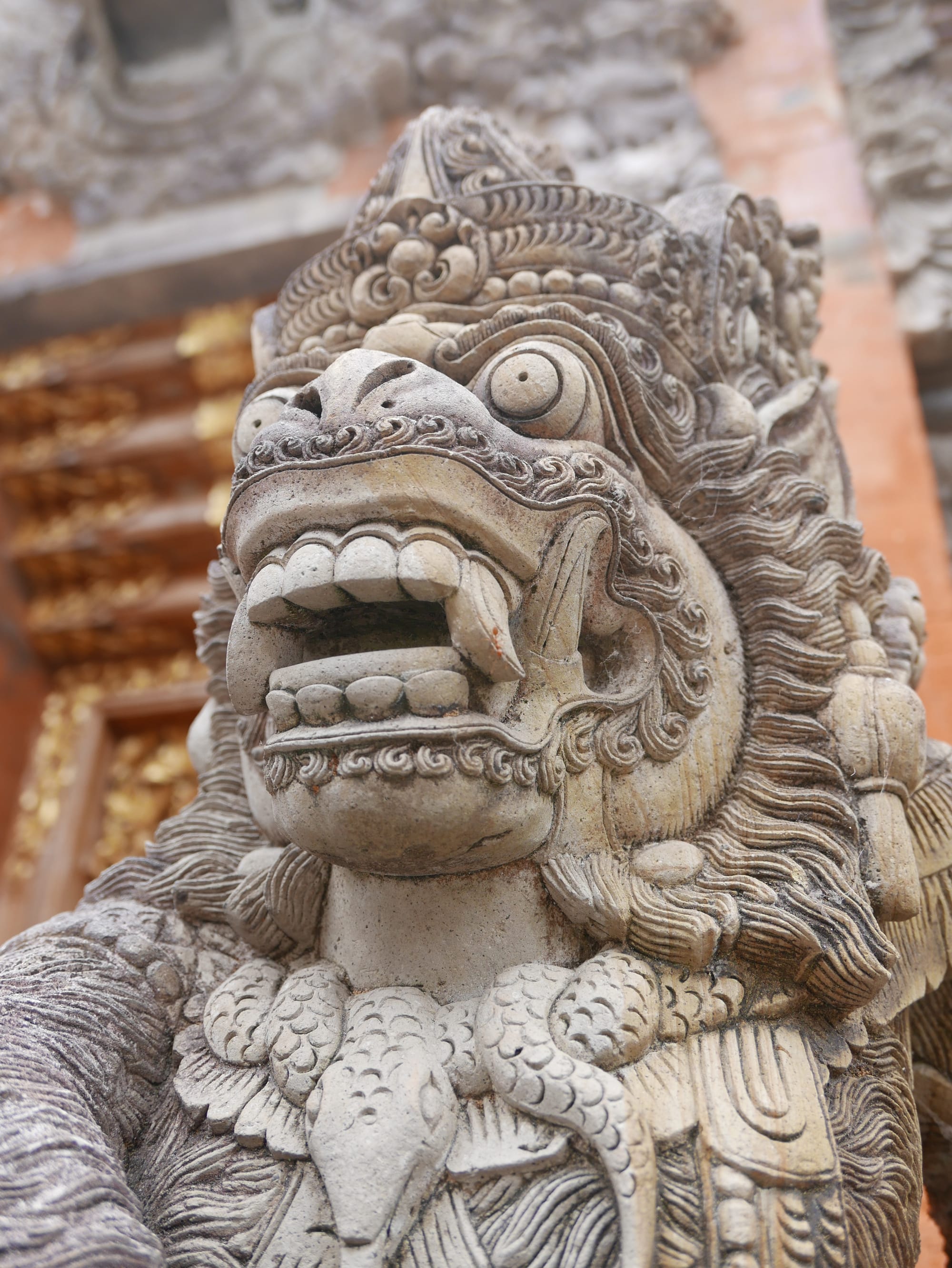
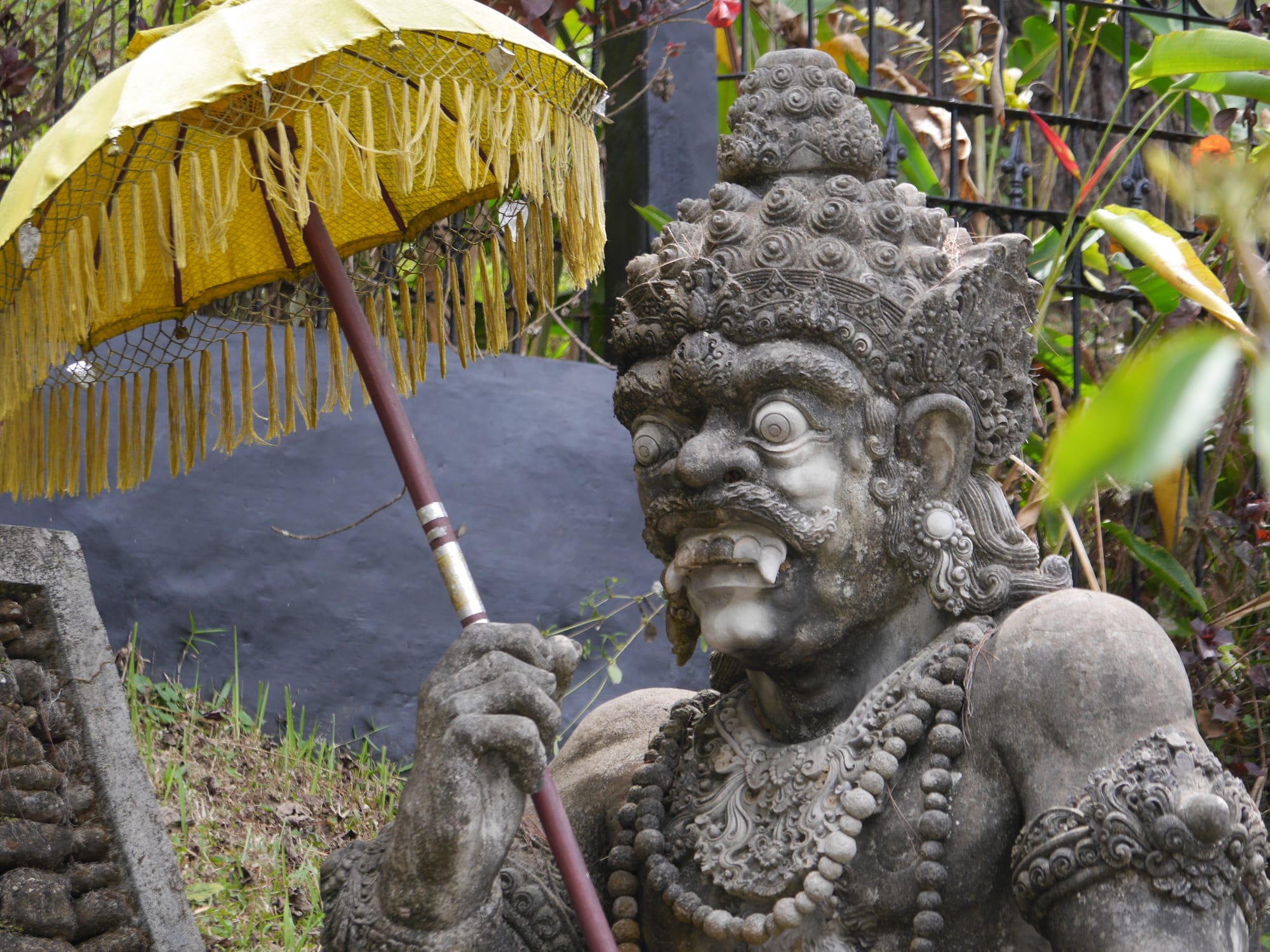
The temple was a very active place of worship, with a small shrine near the entrance.
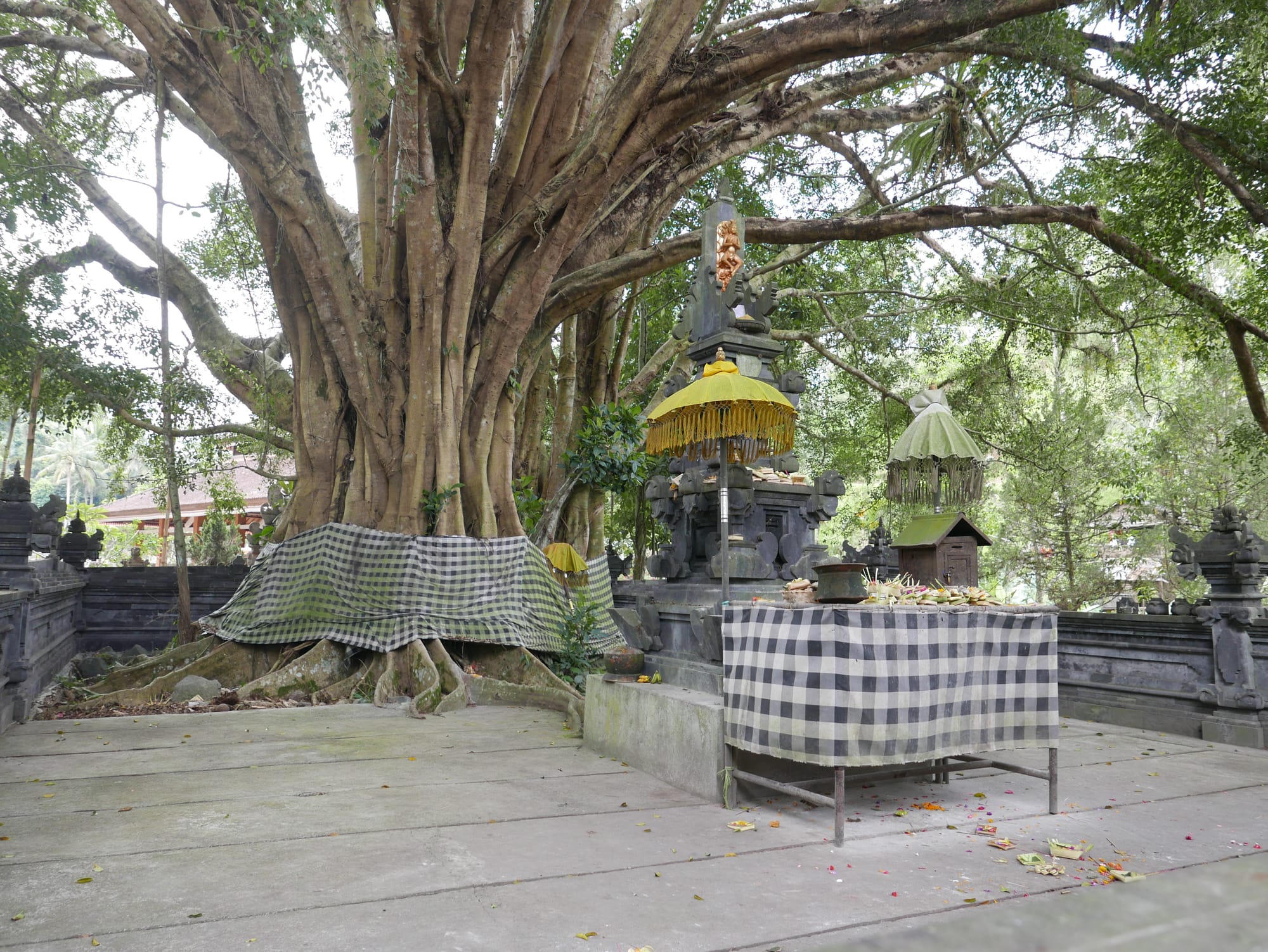
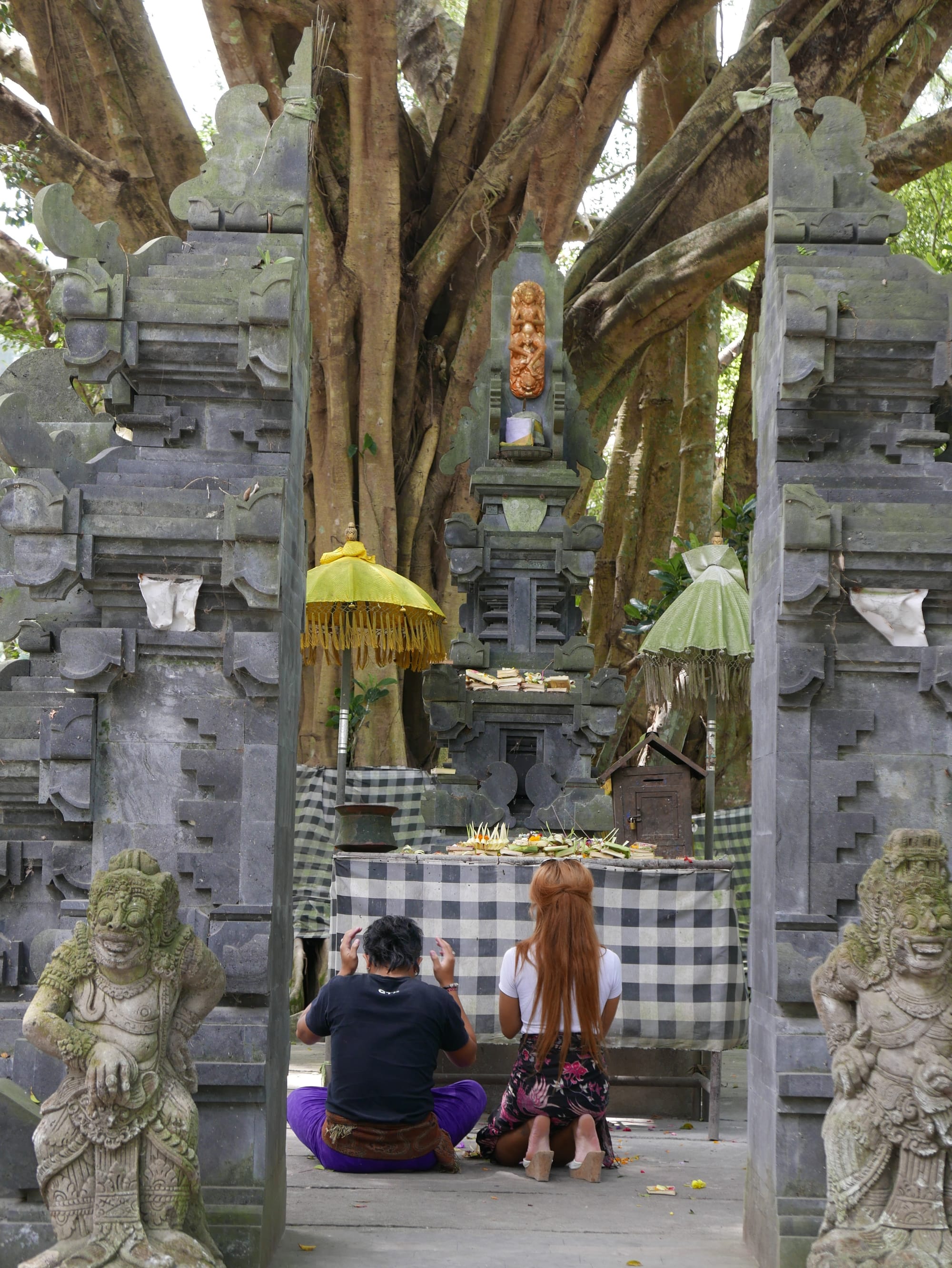
The main temple complex was stunning, with large pools fed from an underground holy spring.
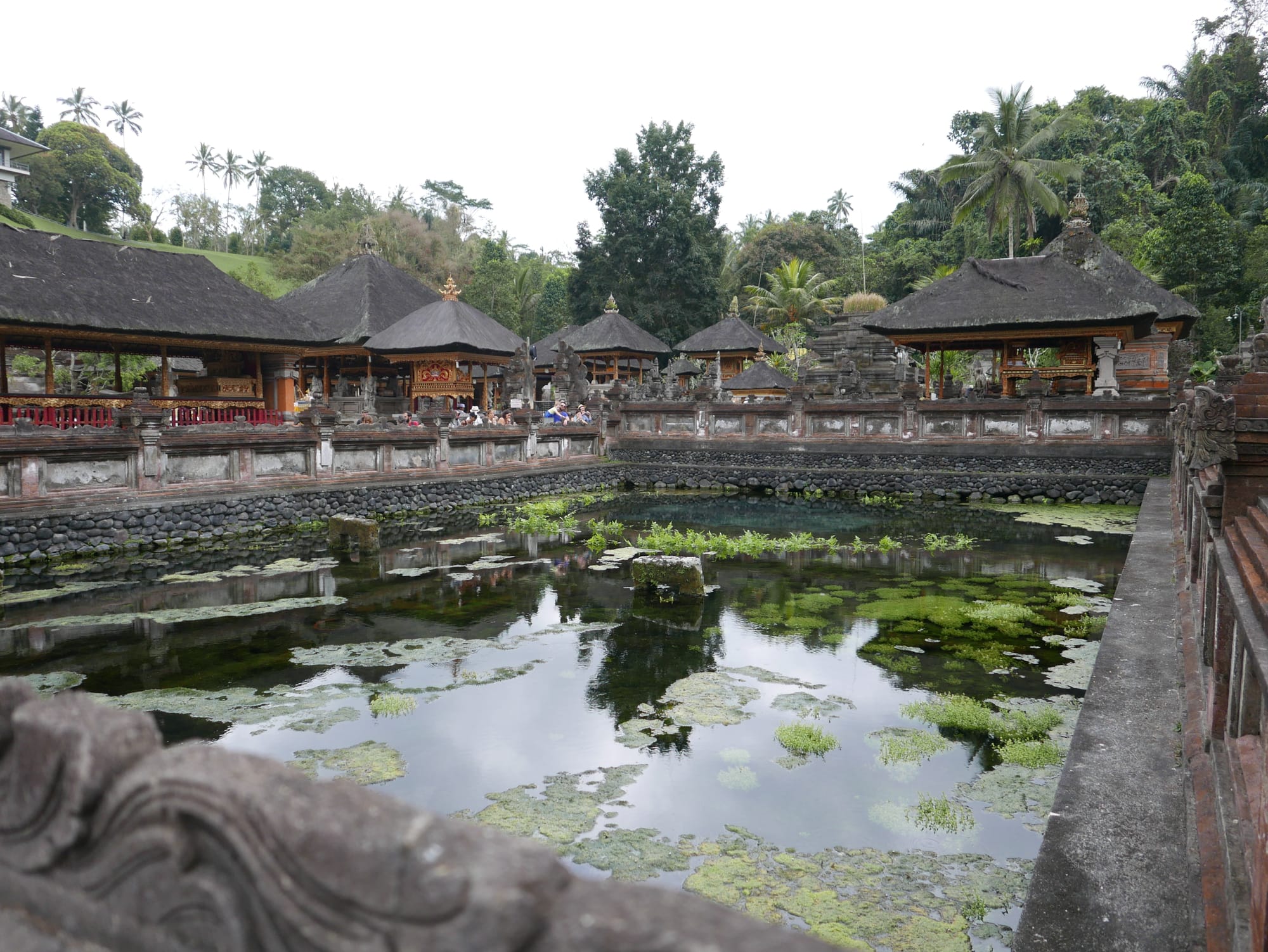
It was great to stand by side the pool pictured below
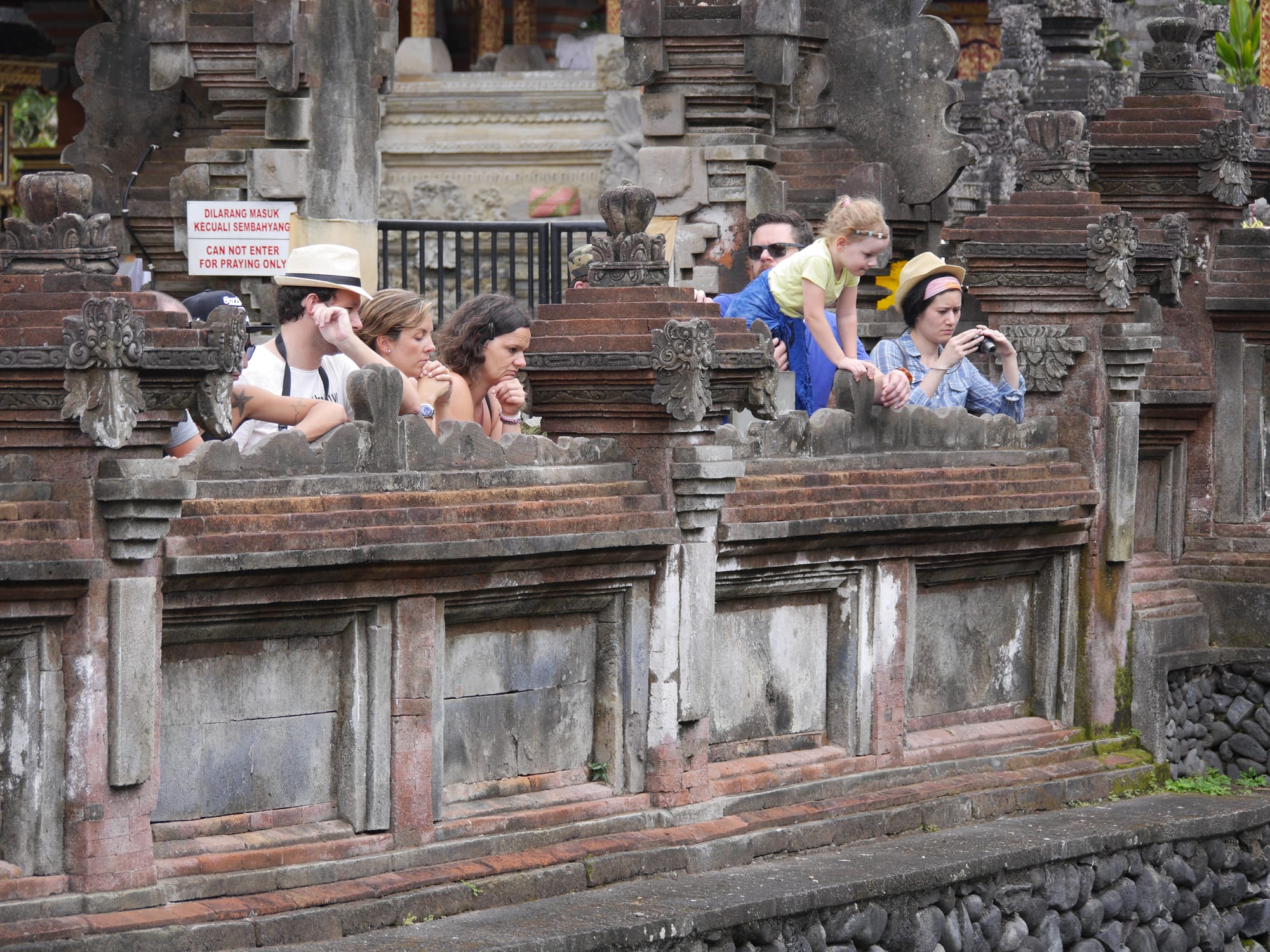
and watch the water well up through the ground… (see below).
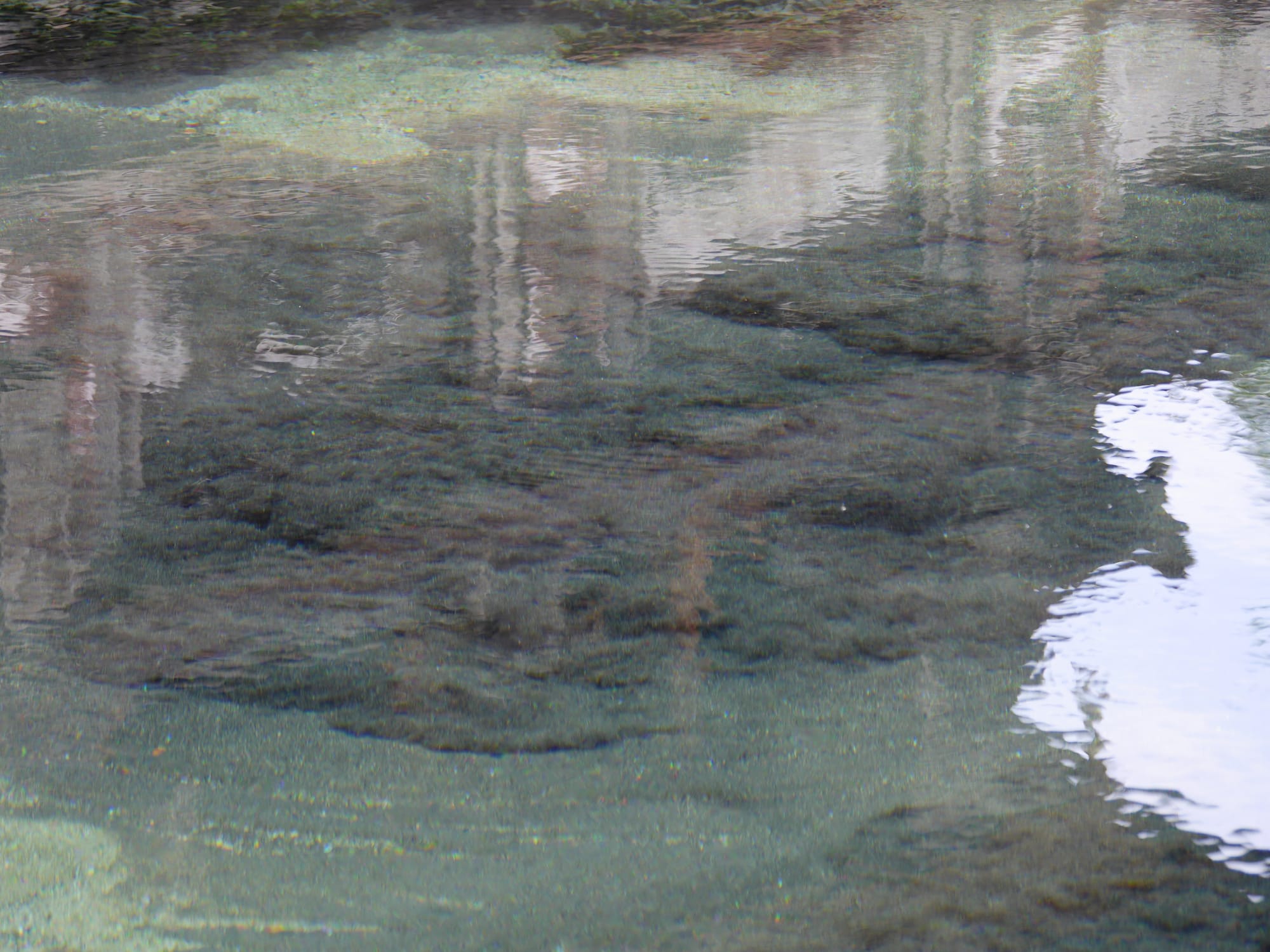
The waters from these pools feed into the main bathing pools of the complex.
Besides the main bathing pools at Pura Tirta Empul (Tirta Empul Temple), there was also a large carp pond with some stunning fish.
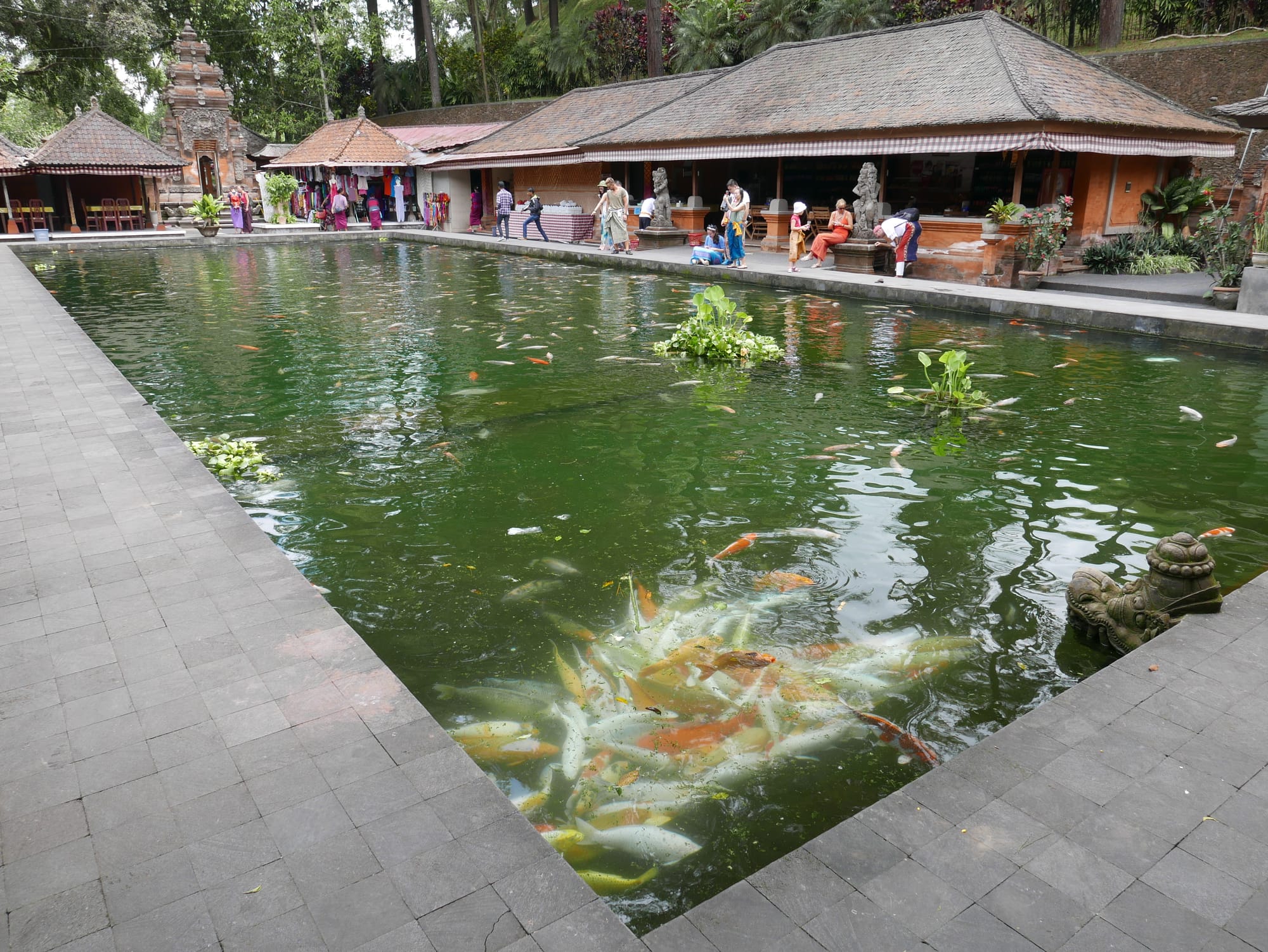
That you could feed.
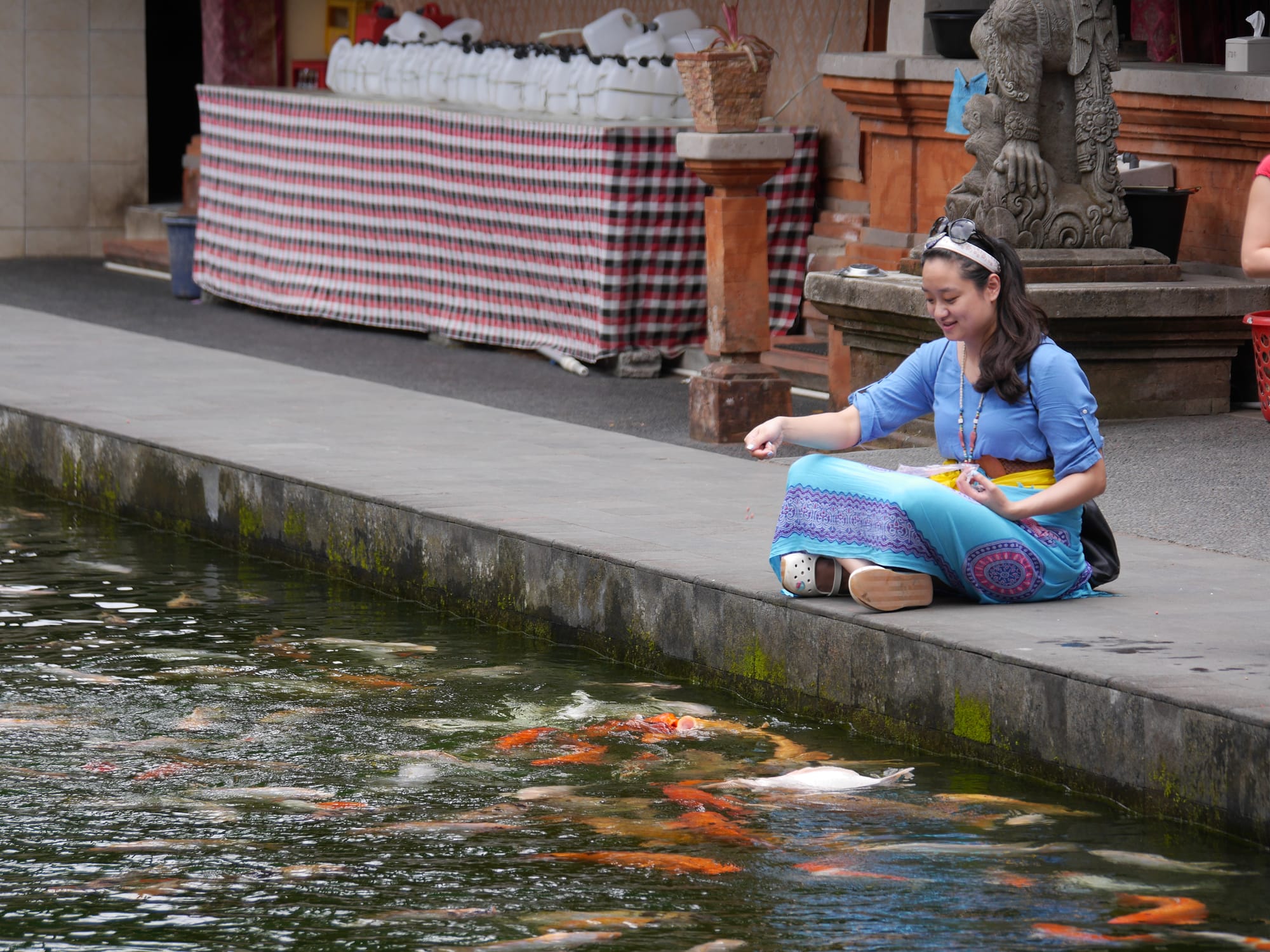
Scattered around the Pura Tirta Empul (Tirta Empul Temple) temple complex were several small shrines and places of worship.
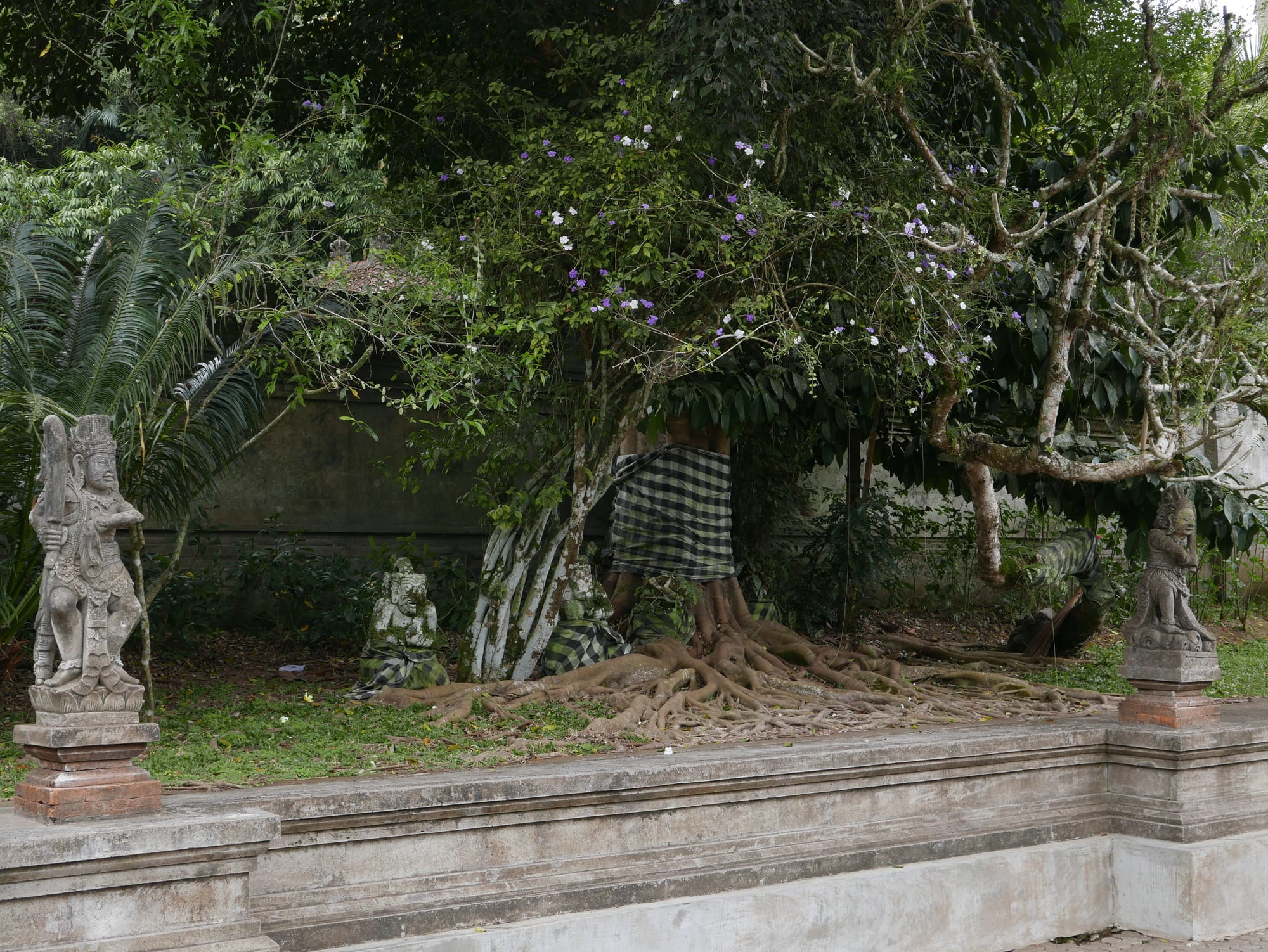
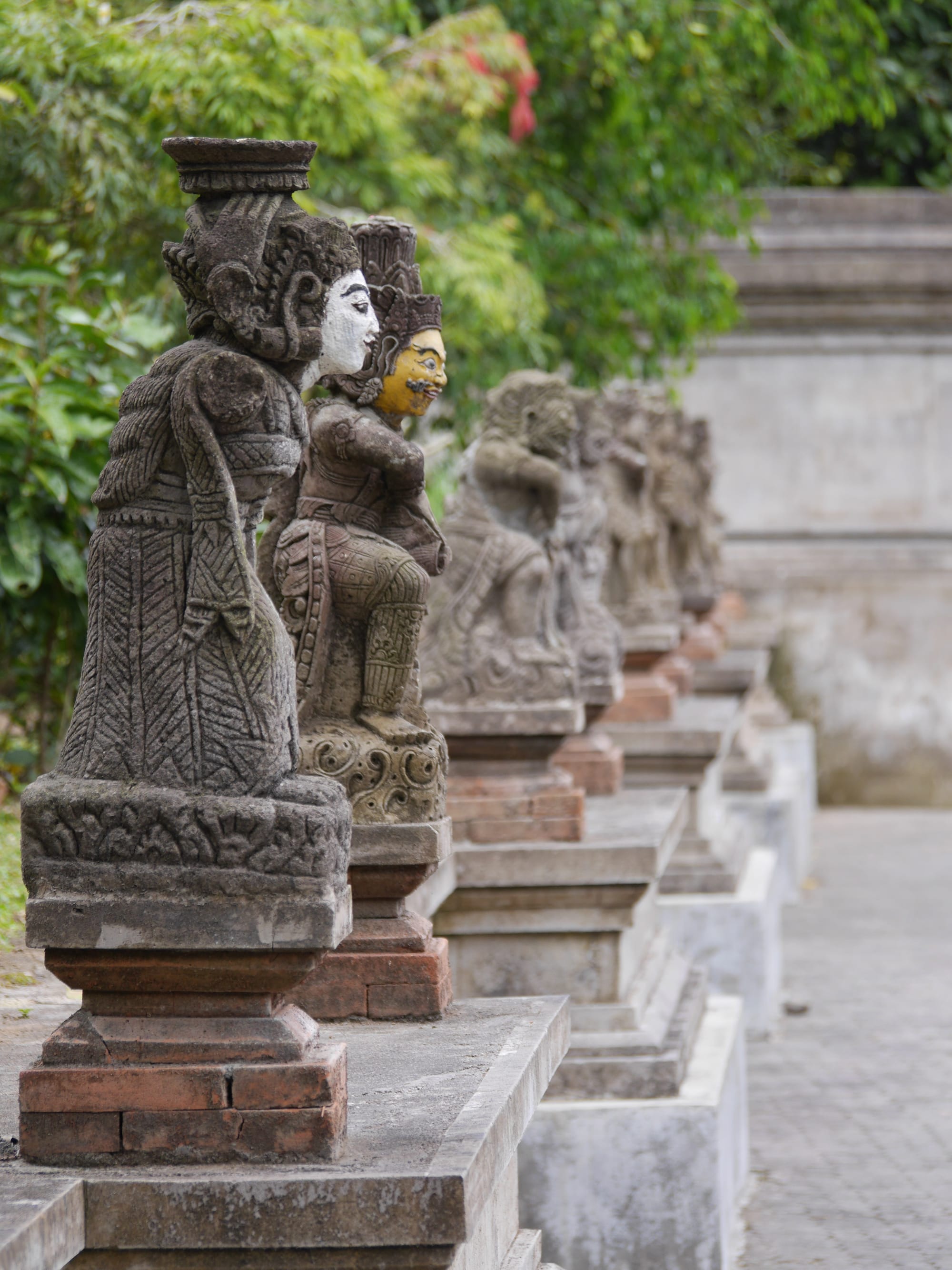
The Lingga-yoni, which is a representation of a vagina or womb (yoni) and is the symbol of the Goddess Shakti (or Devi), the Hindu Divine Mother, and the male counterpart (Lingga), at Pura Tirta Empul (Tirta Empul Temple) looked a bit neglected. In the photo below, the Lingga-yoni is the sculpture in the centre, surrounded by a tarnished yellow ribbon.
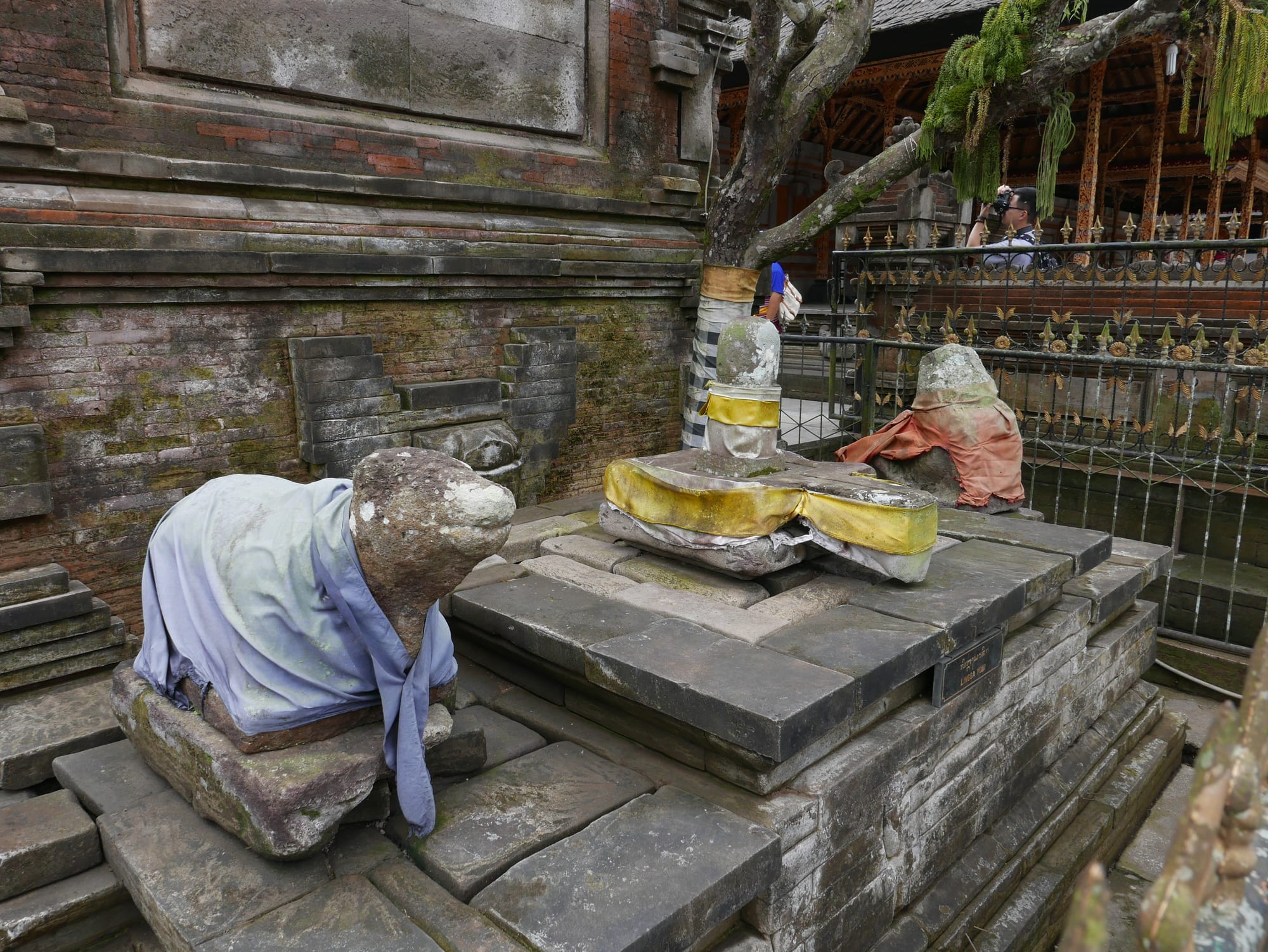
The Lingga-yoni can be seen better in the photo below. The yoni is the flat section of the sculpture, and the lingga is the phallic rock structure in the centre.
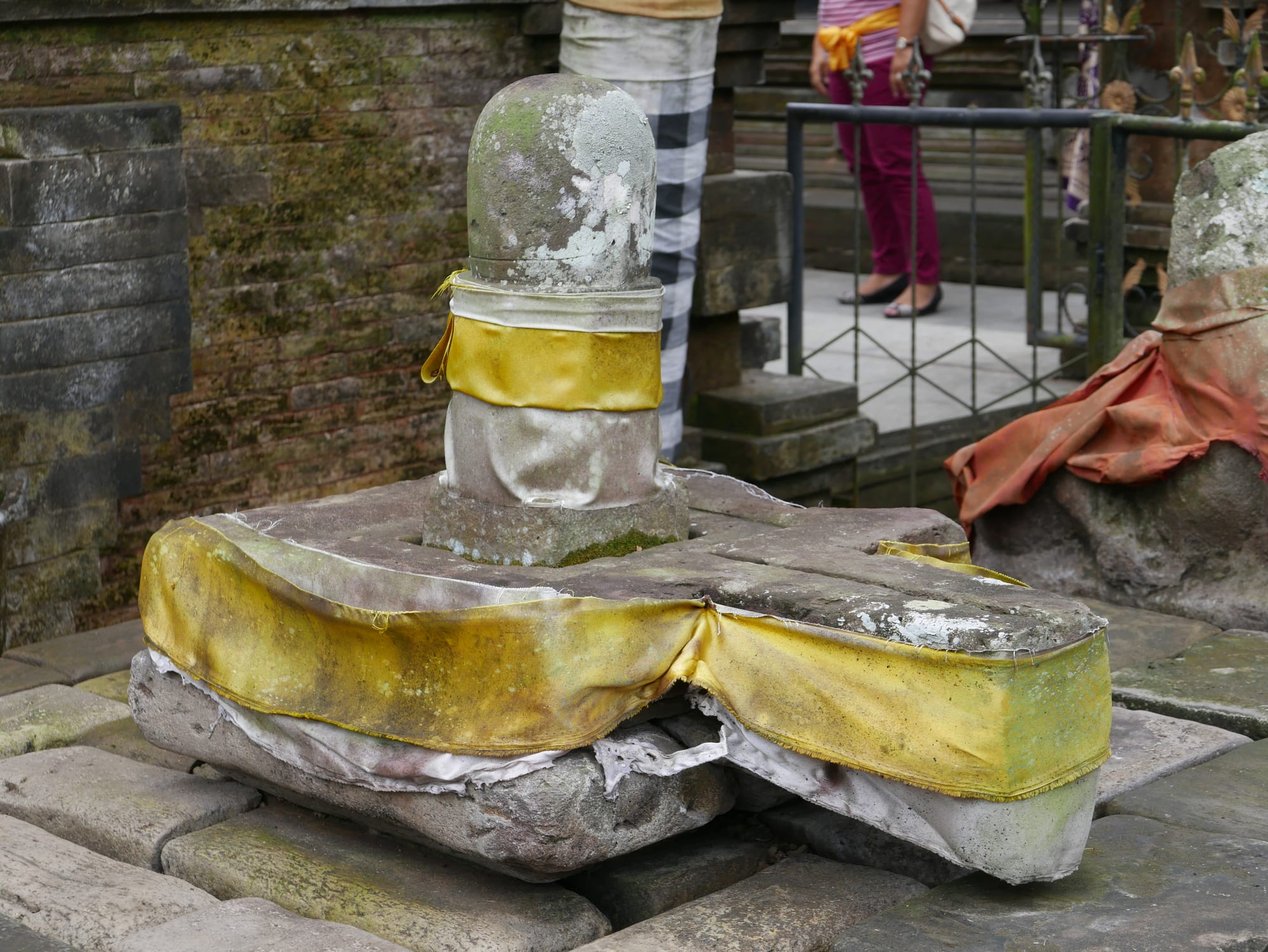
Although the Lingga-yoni looked neglected, it was still receiving offerings.
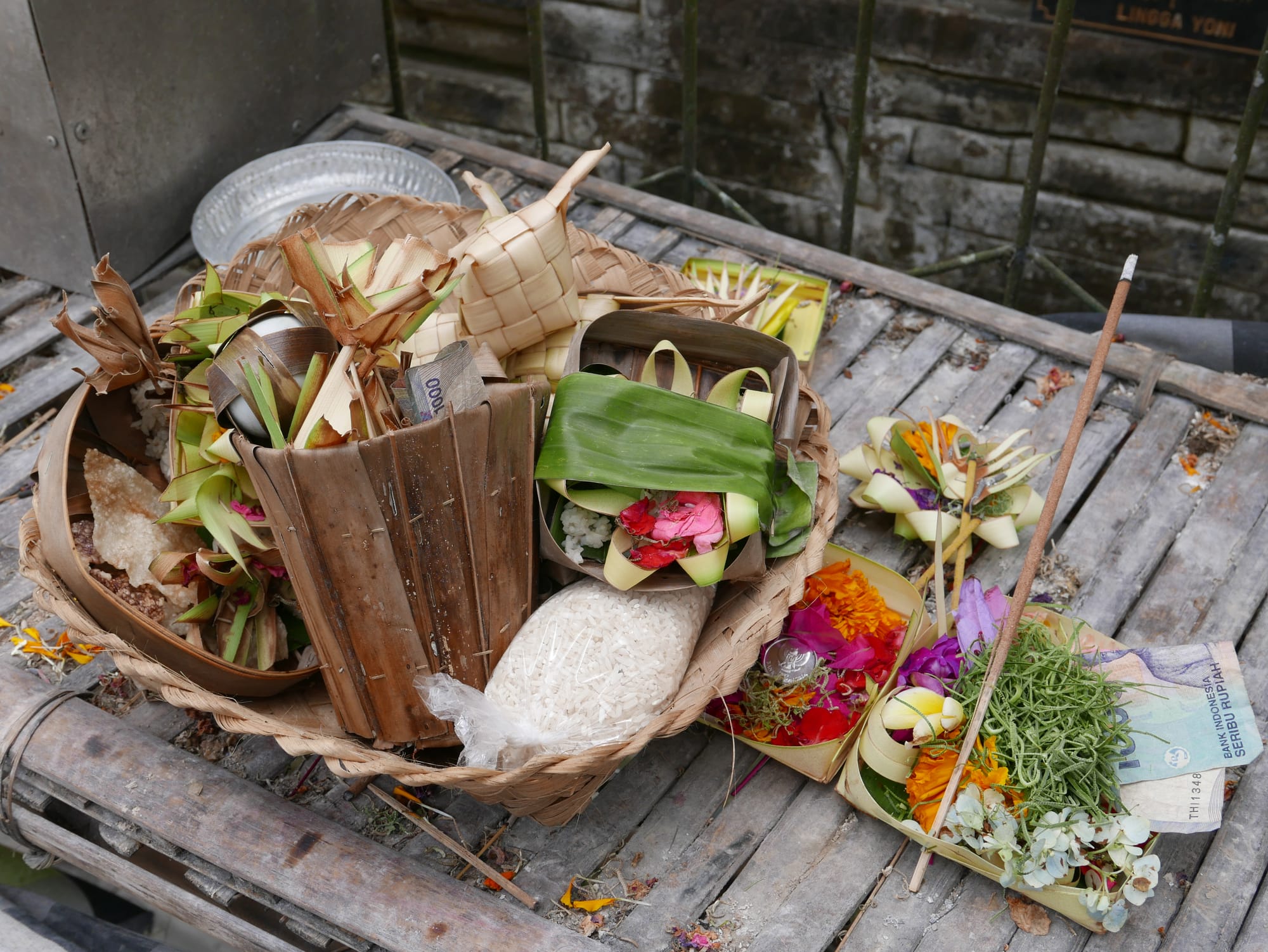
The craftsmanship at the temple was stunning.
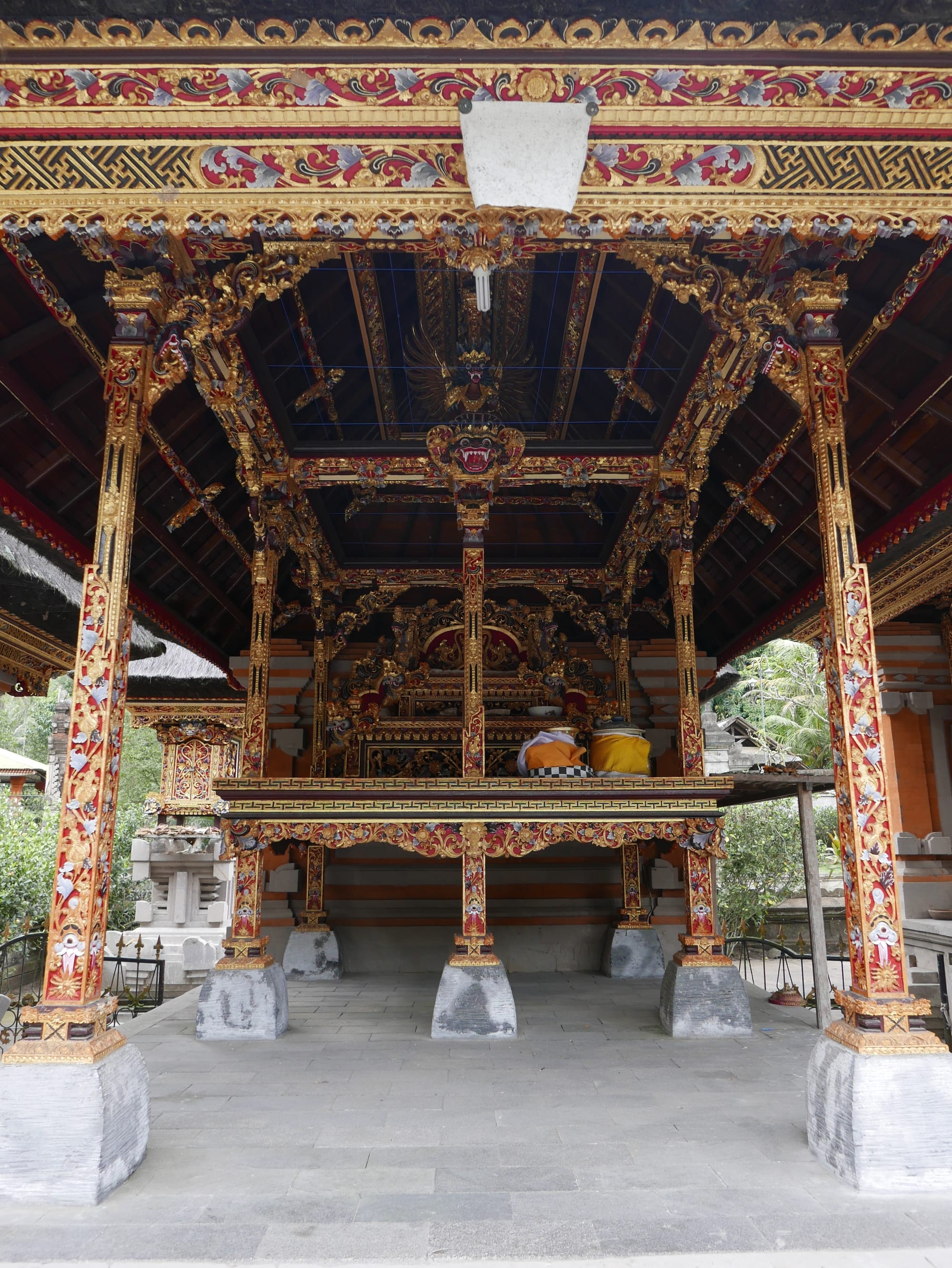

However, I had come to Pura Tirta Empul (Tirta Empul Temple) to see the bathing pools.
There were very strict rules to enter the temple complex, and one of them, which I had never encountered before, was that I had to wear an orange sash. Why? The sashes were free, with an optional donation, and after visiting the temple and returning the sash, I didn’t mind giving over some money.
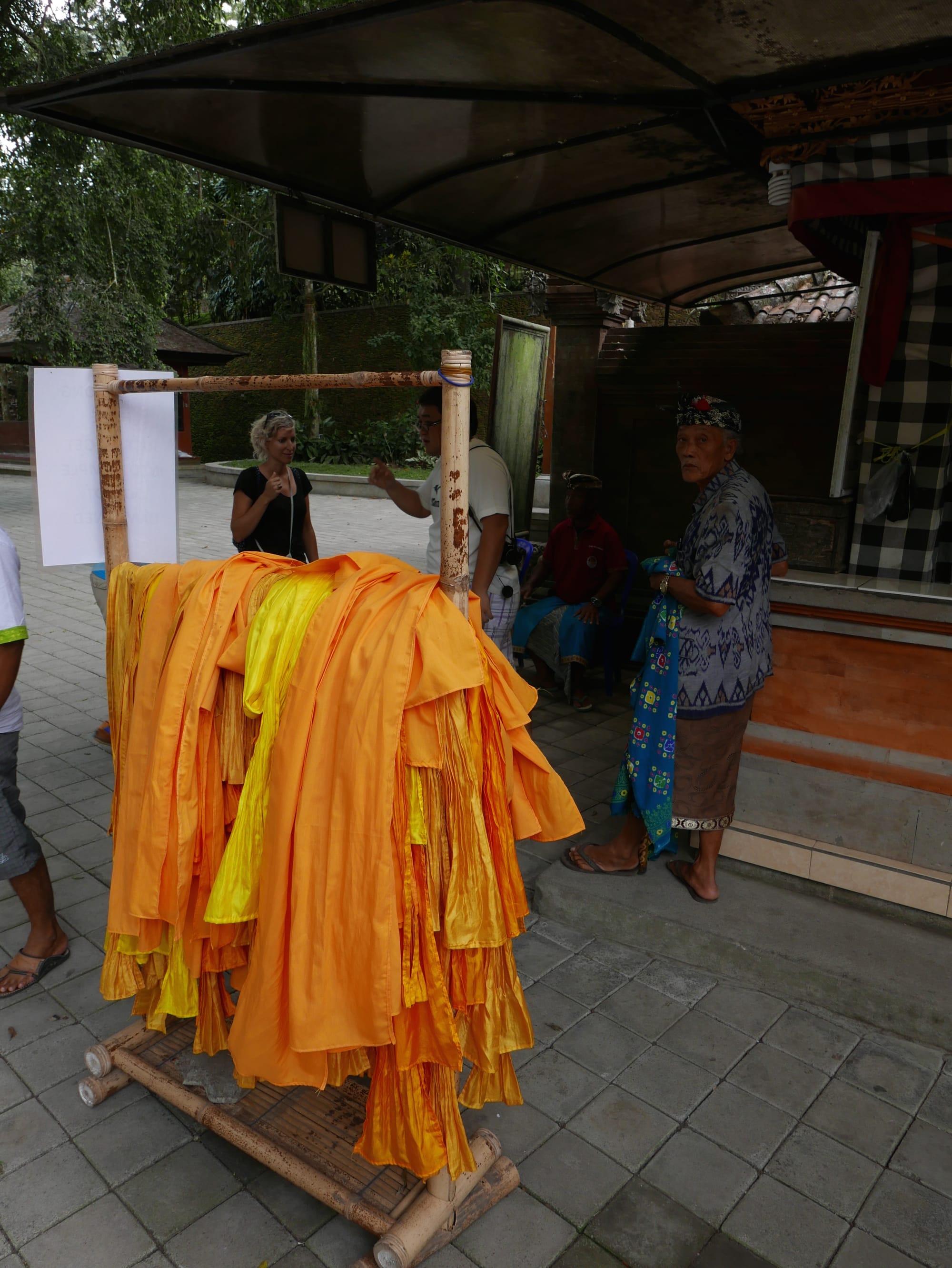
If you were wearing shorts, that is, your legs weren’t covered, then you could borrow a free sarong — and I must admit that some of my fellow travellers looked most fetching in their sarongs.
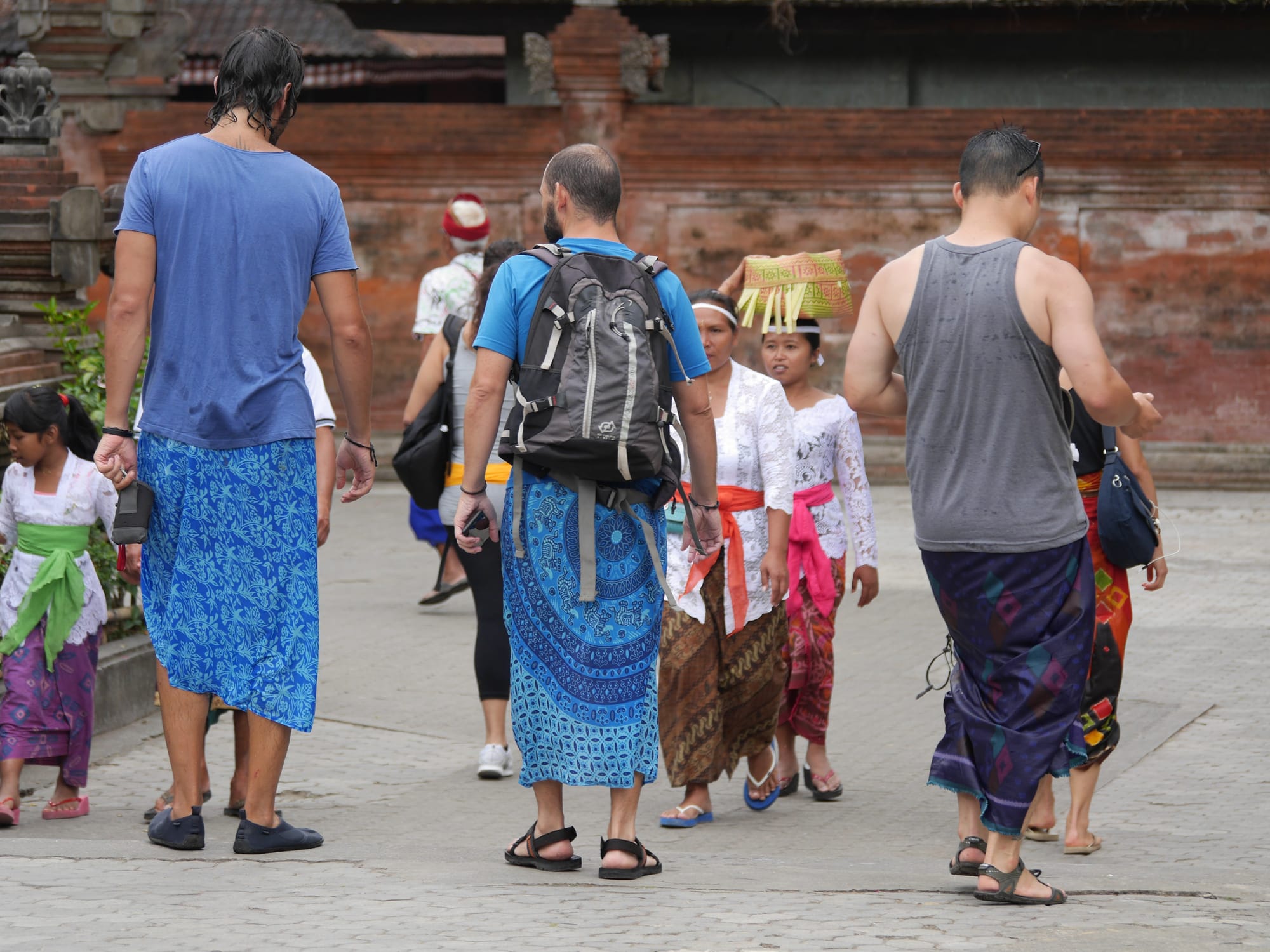
I can just see the following lads striding down the high street of their hometowns dressed like this on a Saturday night.
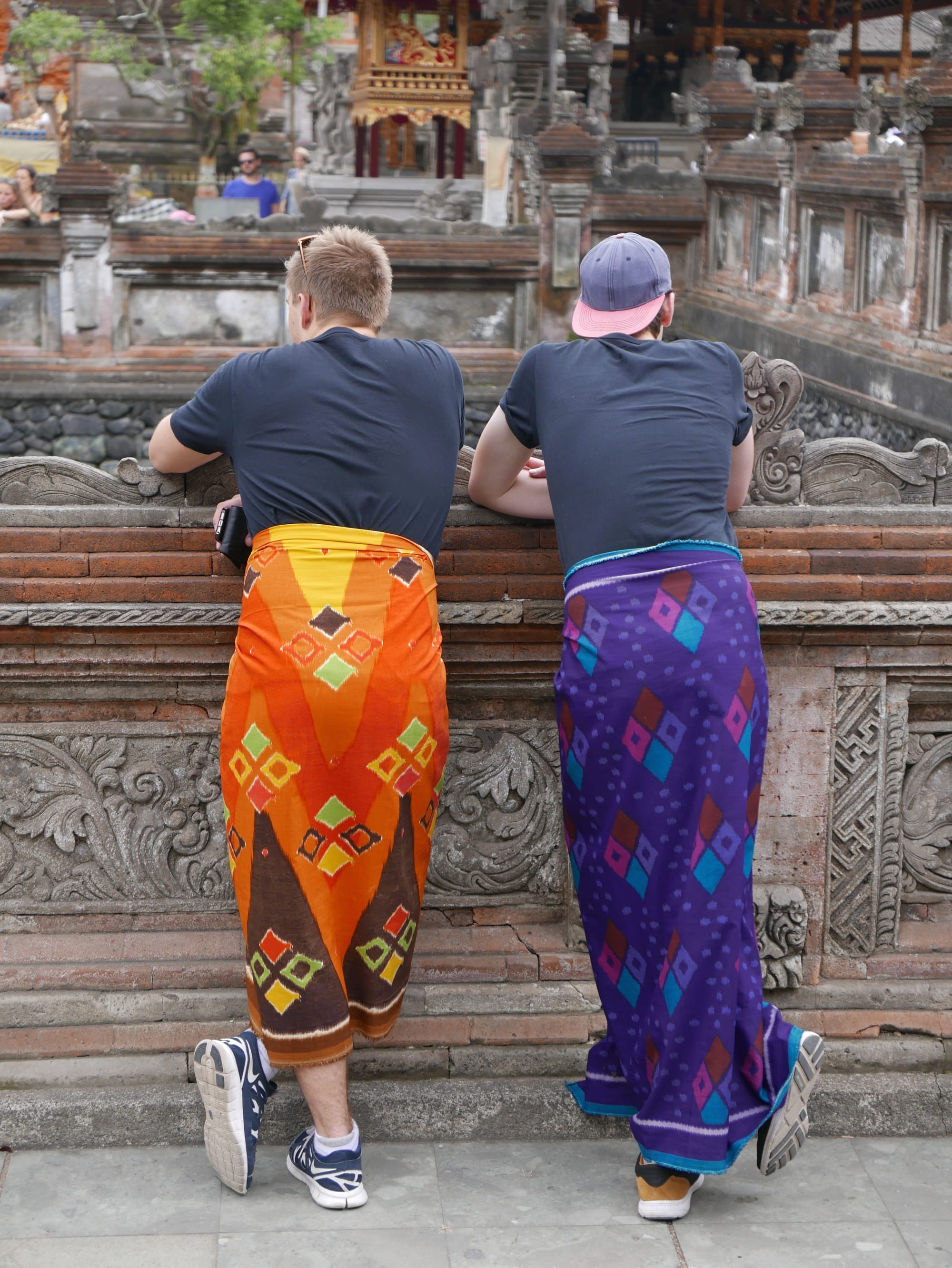
Nice colours, guys!
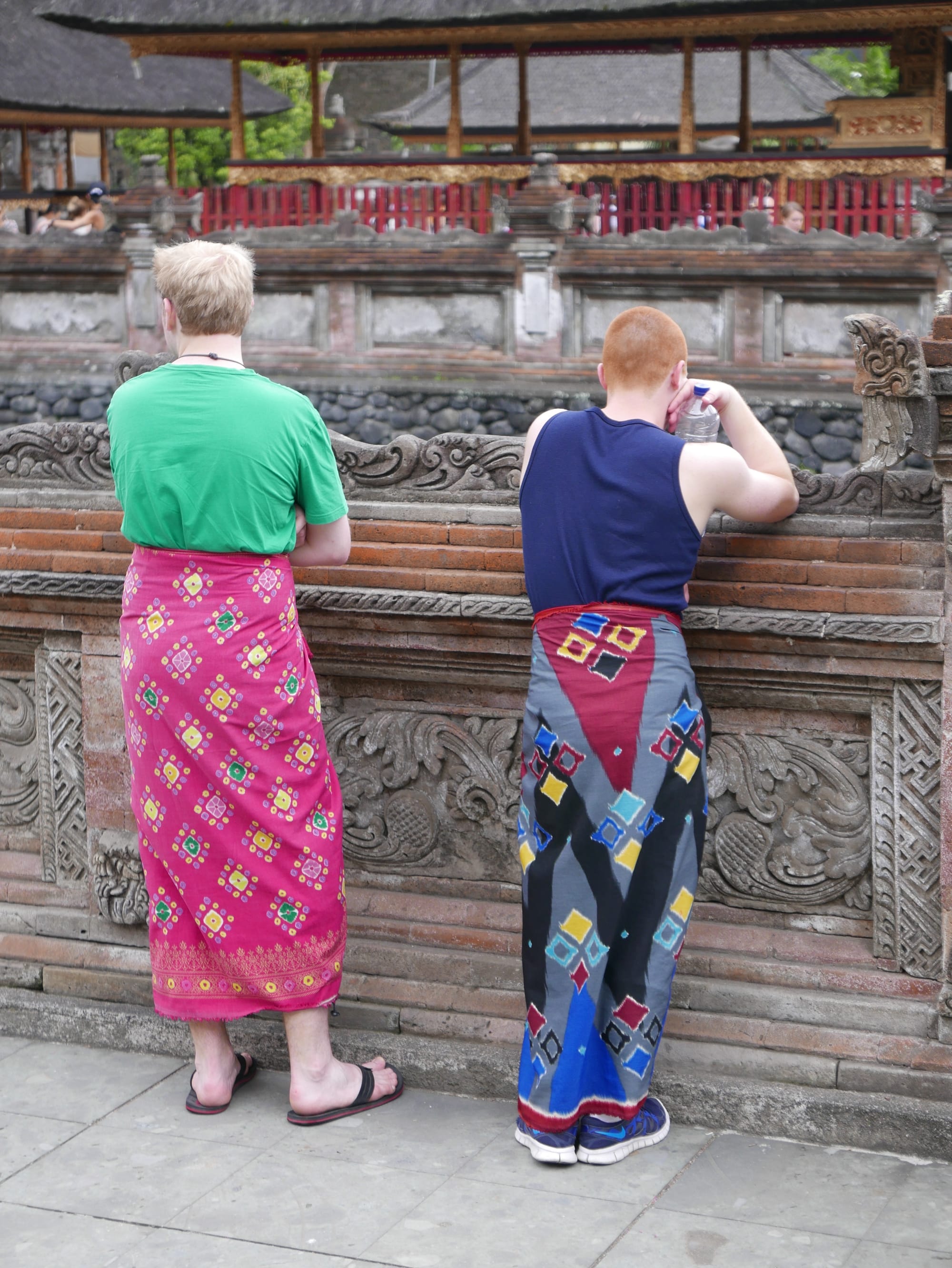
Scattered around the temple were small offerings that the worshippers had made.
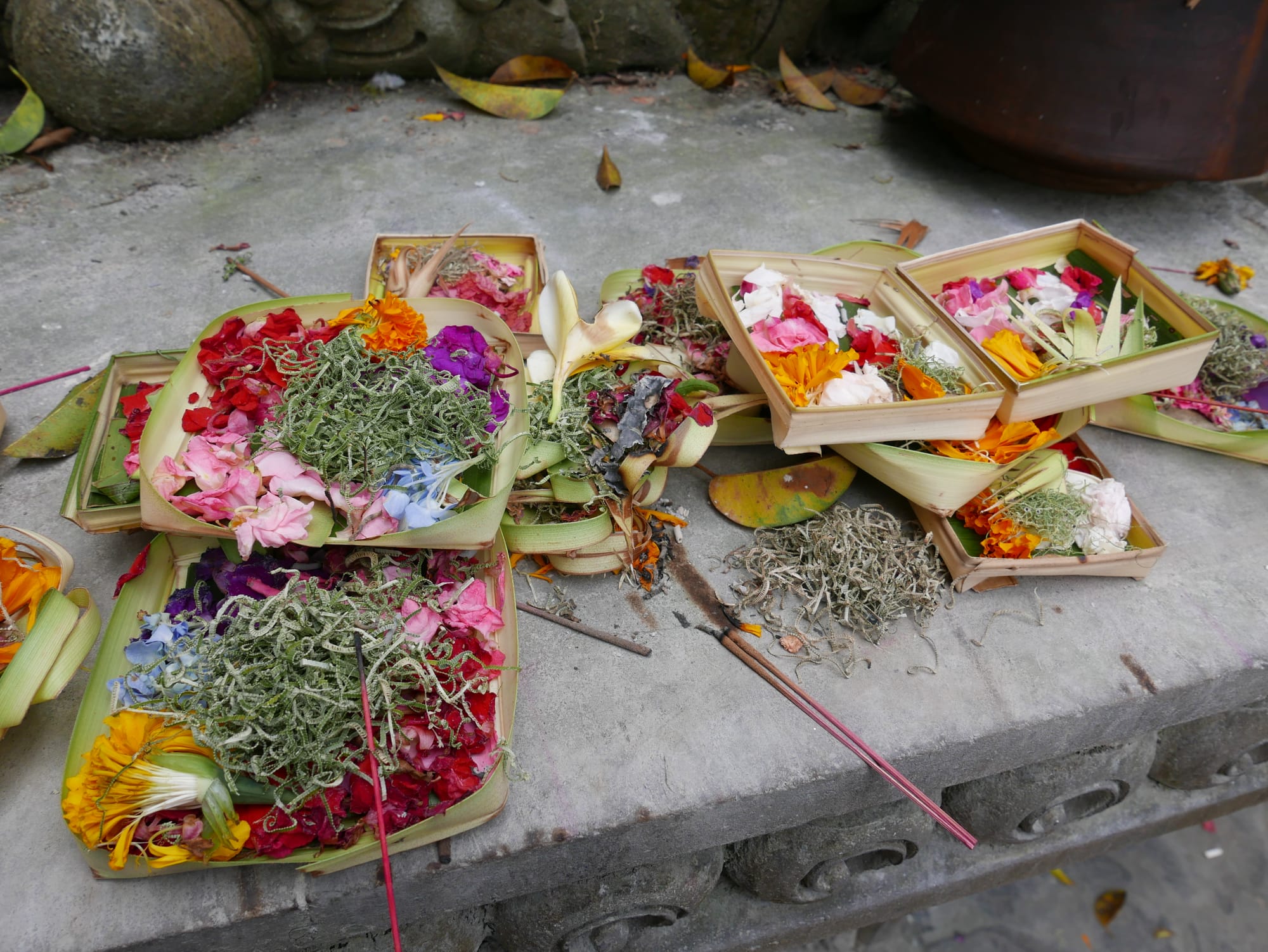
But I had come to Pura Tirta Empul (Tirta Empul Temple) — or the Water Temple — to see the bathing pools.
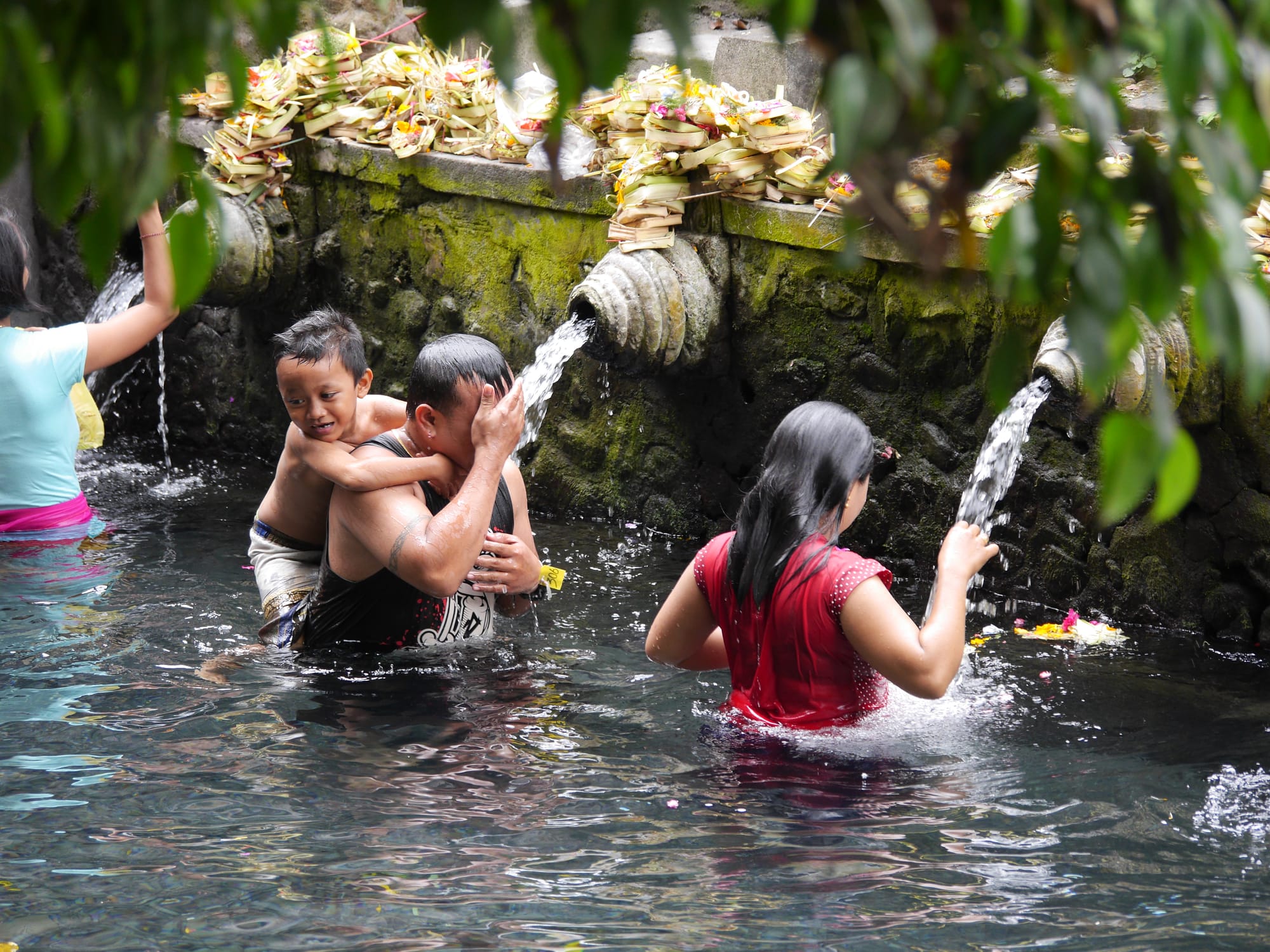
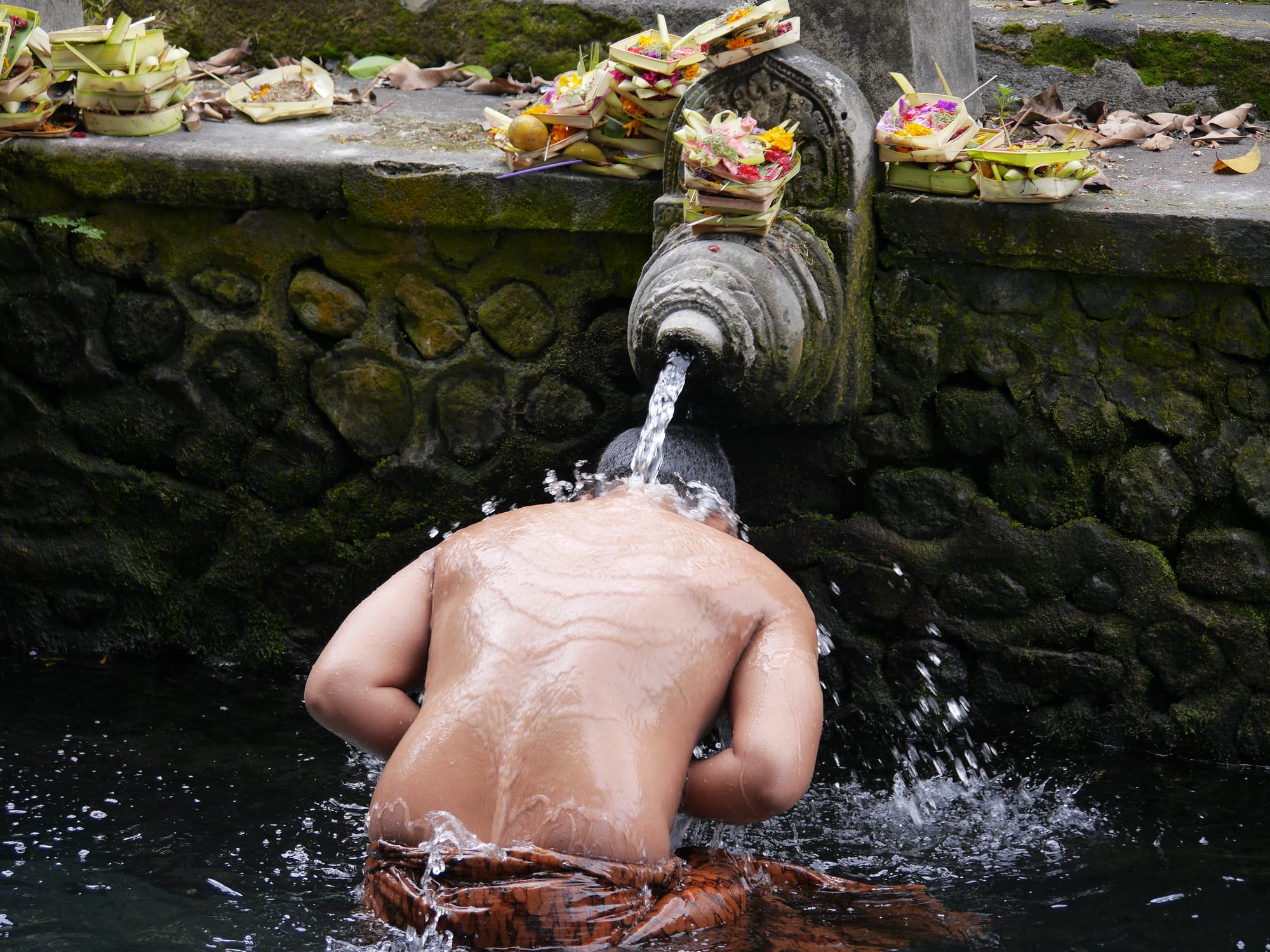
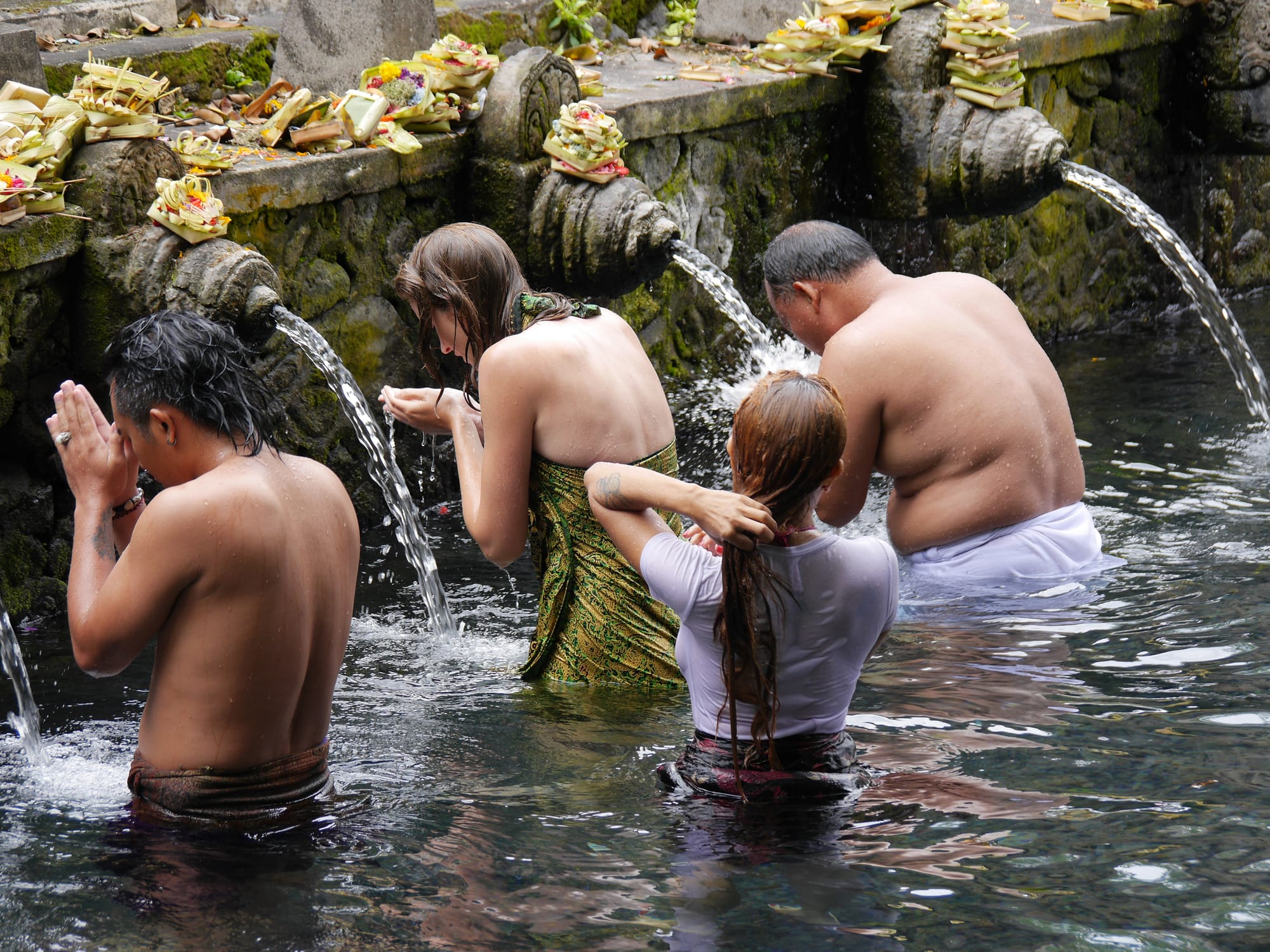
The number of offerings stacked on the sides was amazing.
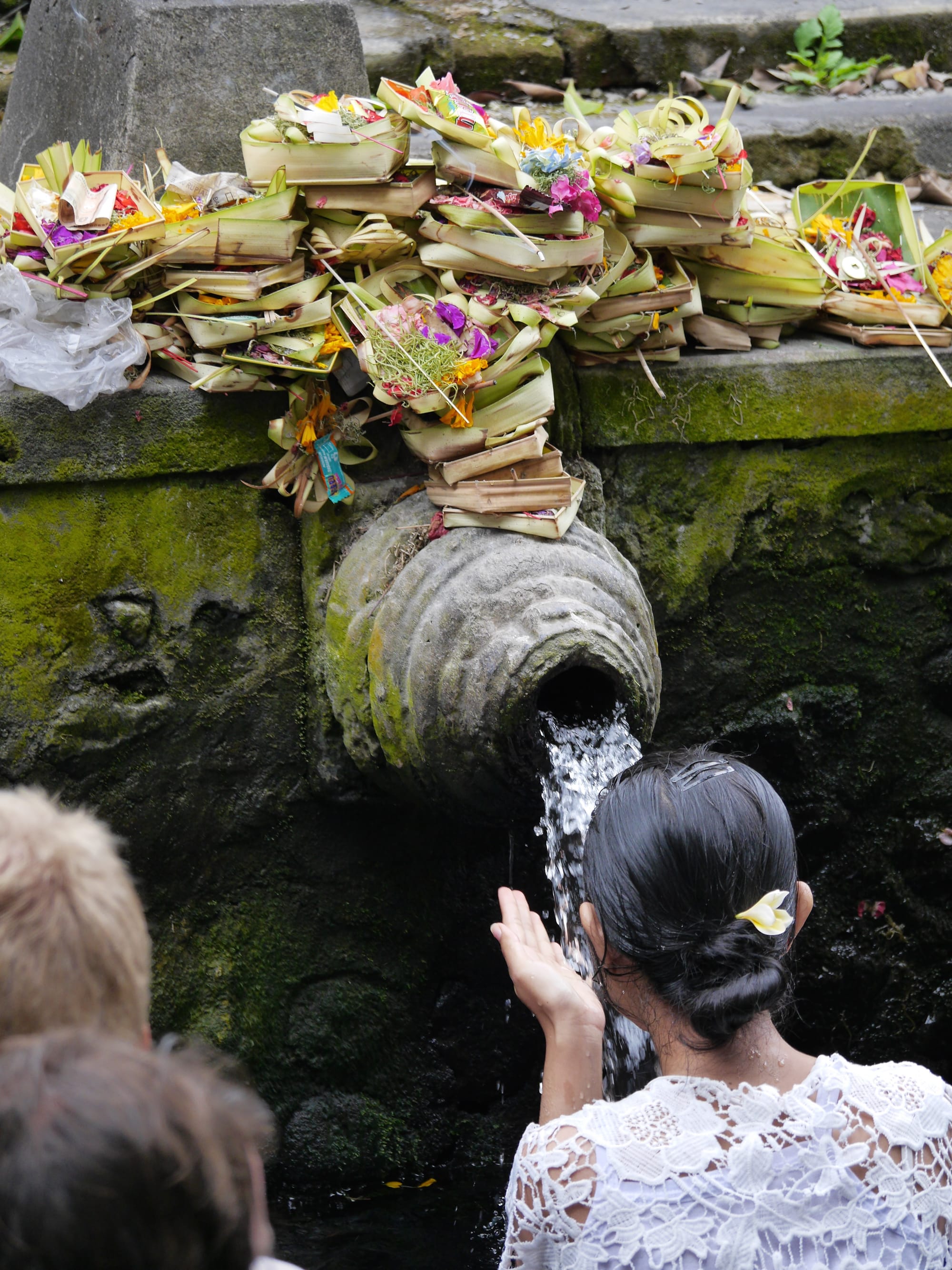
Pura Tirta Empul (Tirta Empul Temple) is a working temple. Not only were there the bathing pools, but there were also several other religious ceremonies going on when I visited.
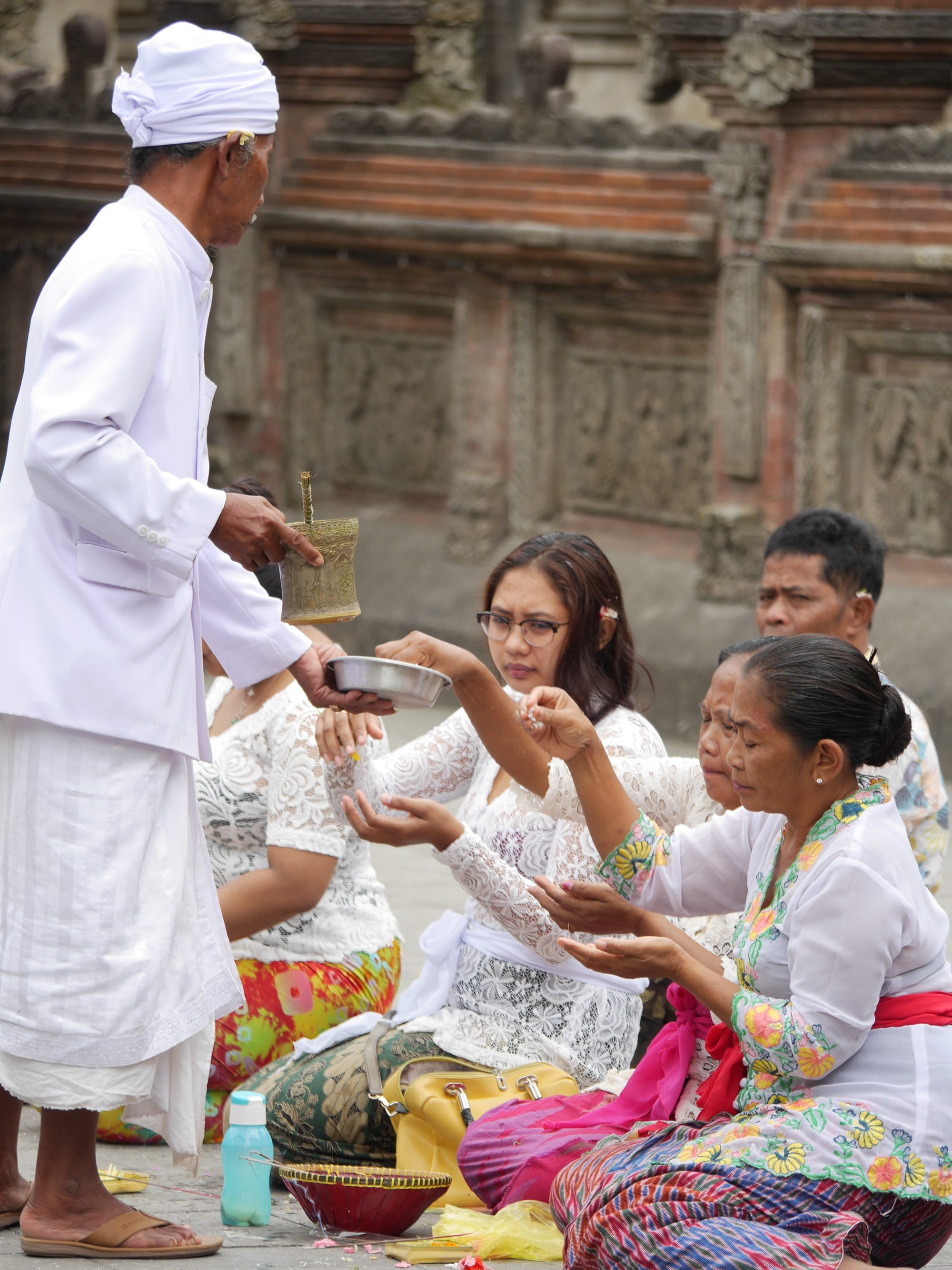
Some people were carrying food on their heads that they were selling — whether for eating or to give as an offering, I was unsure.
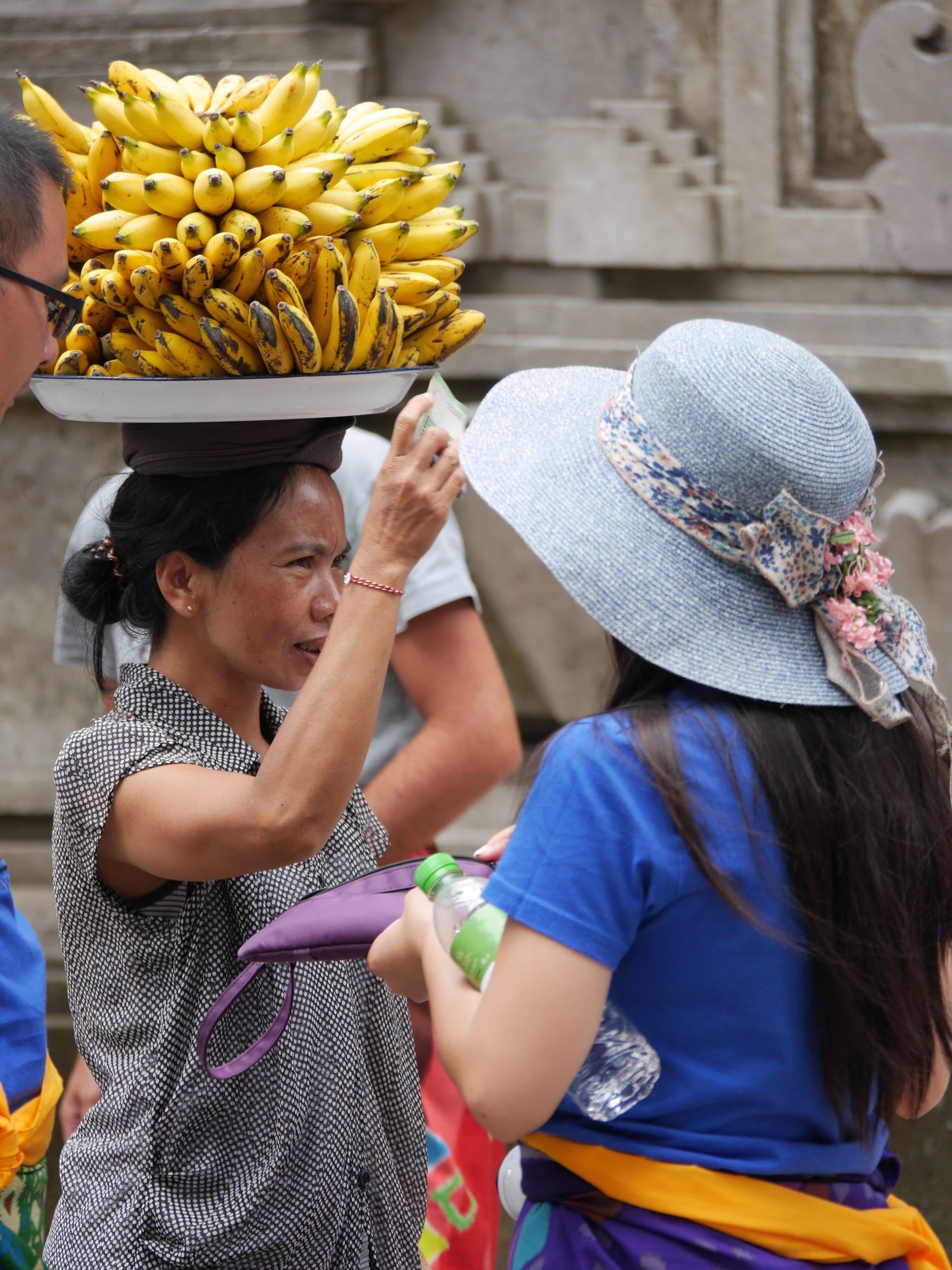
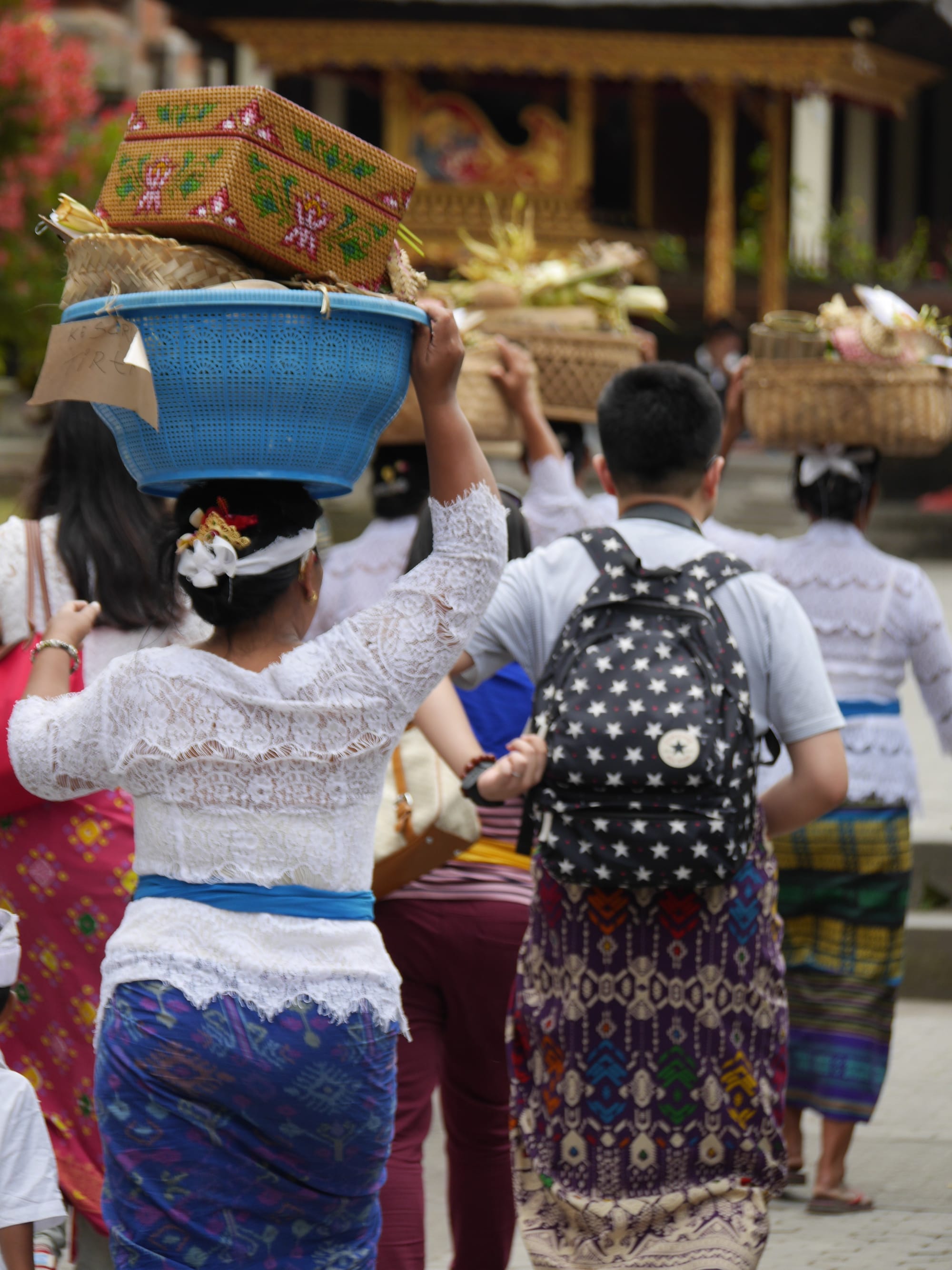
While I was at Pura Tirta Empul (Tirta Empul Temple), a religious parade arrived.
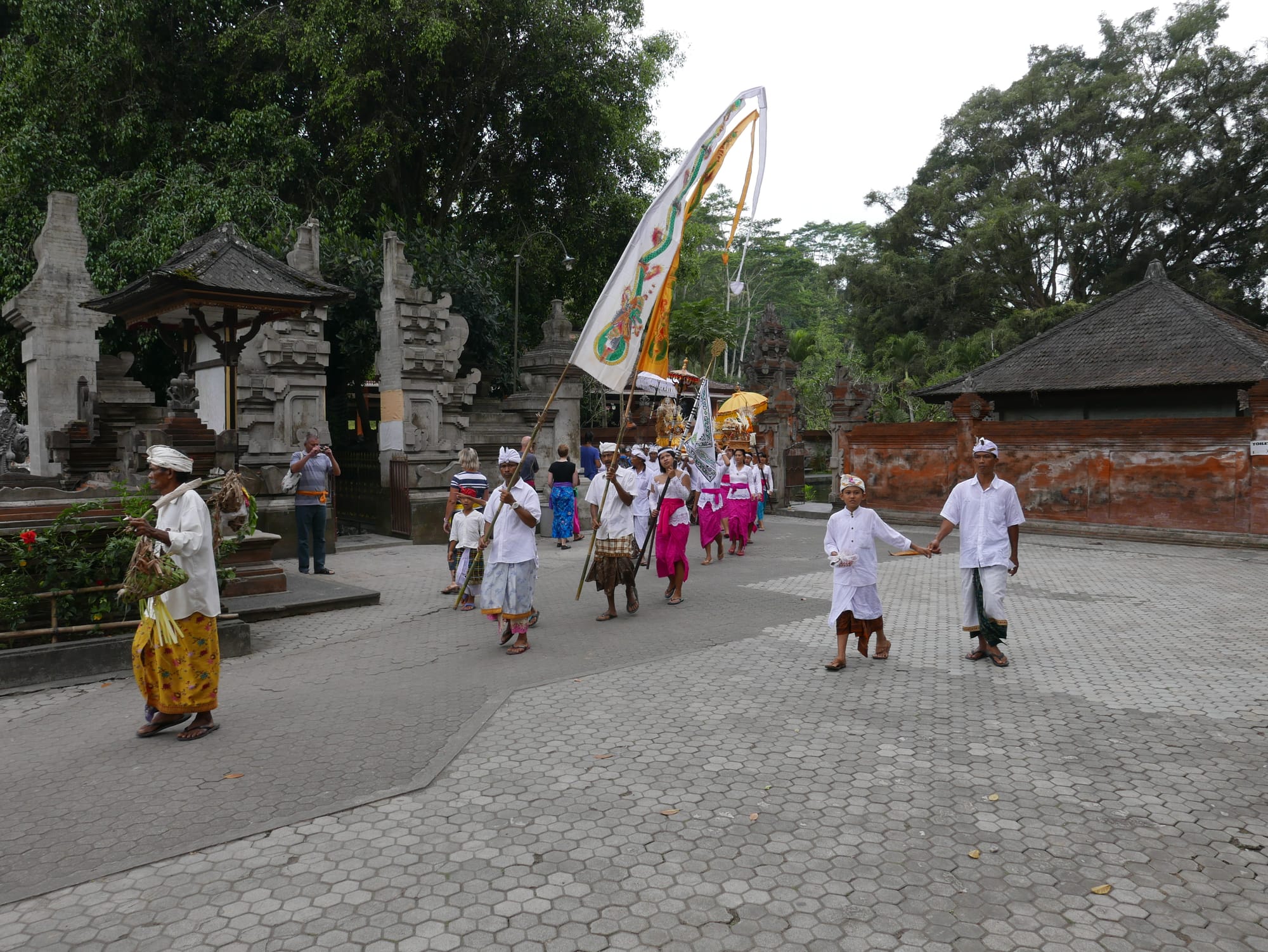
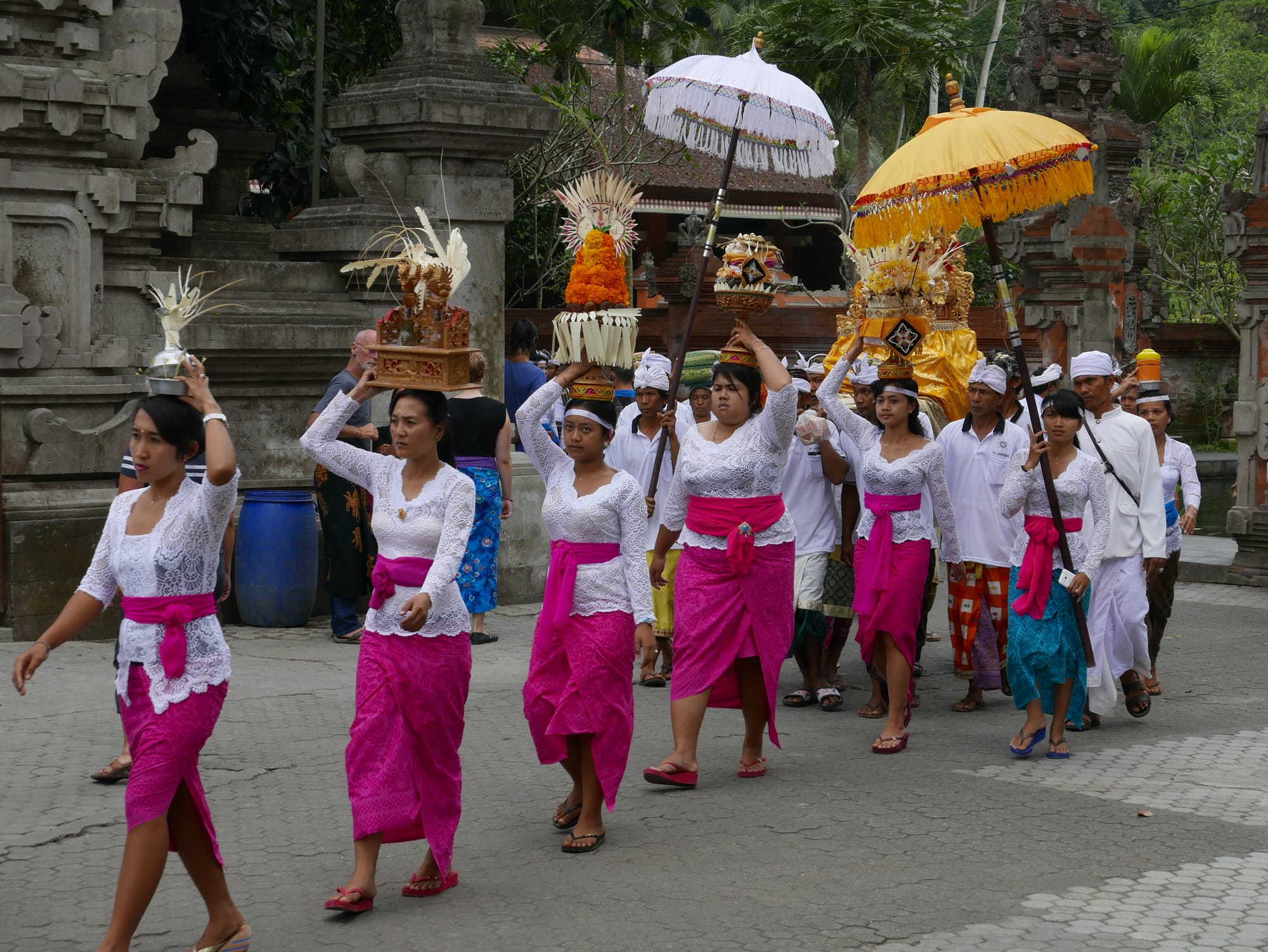
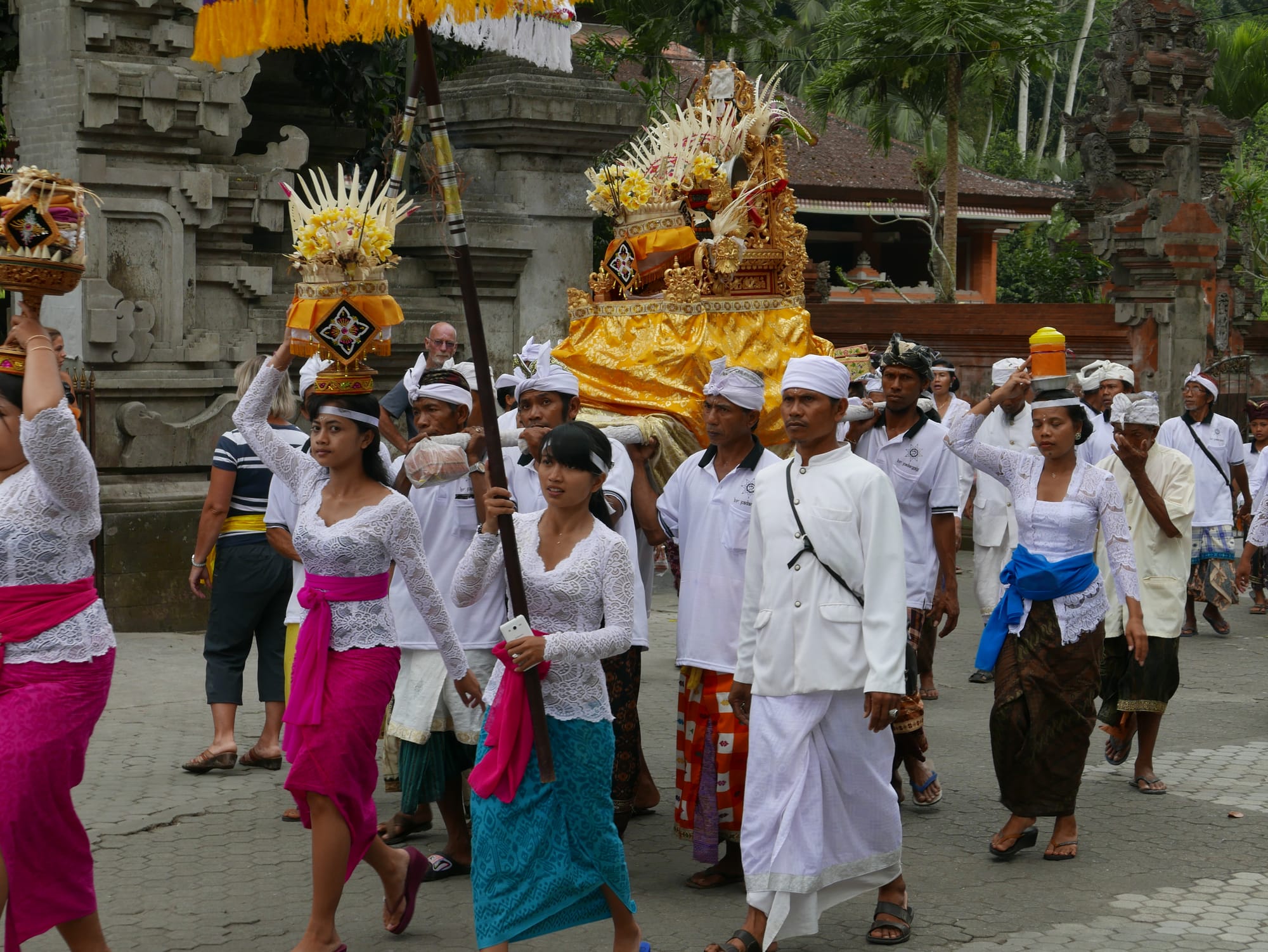
And the band was loud.
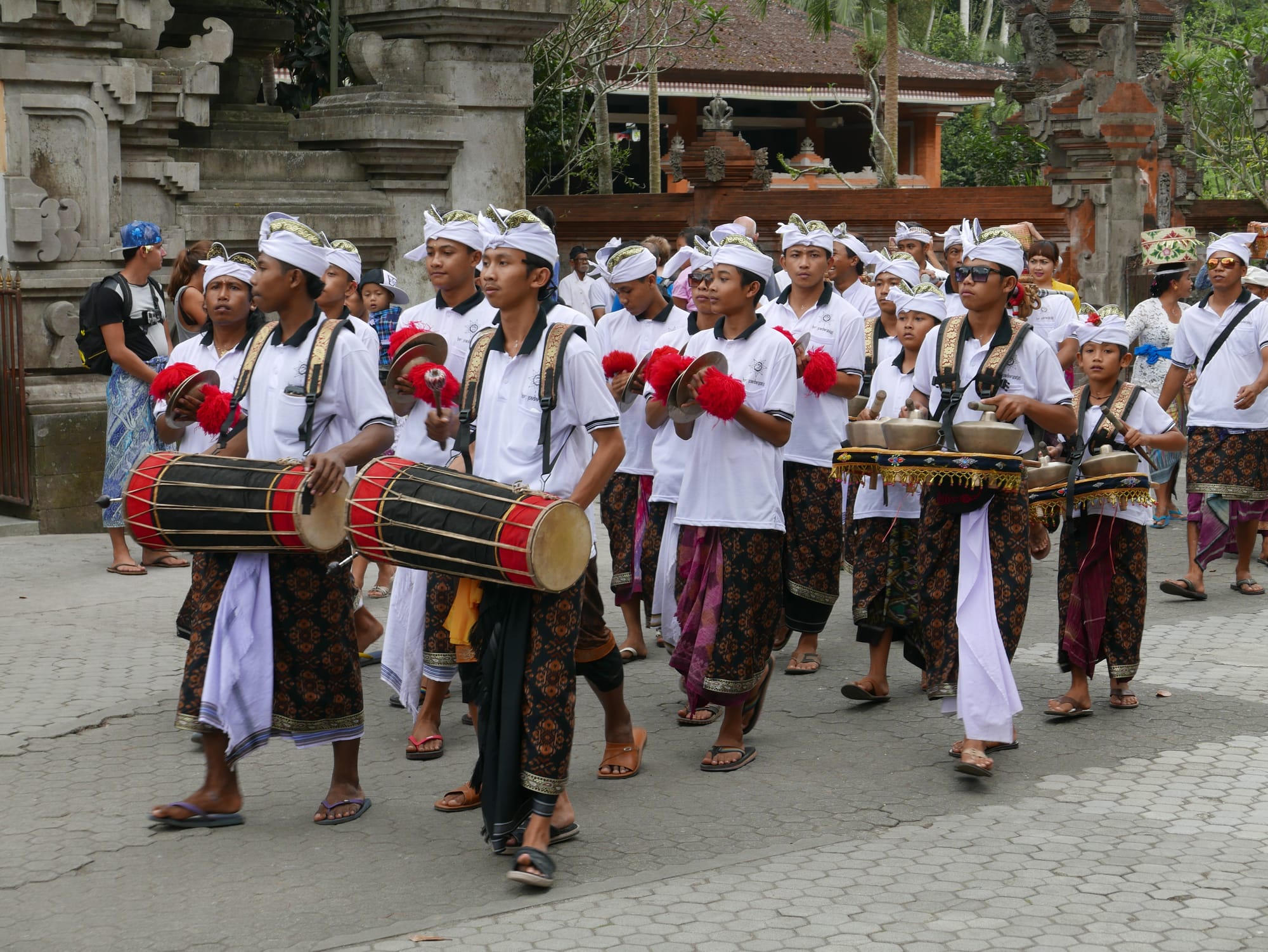
Having spent a couple of hours in the temple, I decided it was time to leave, so I followed the signs to the exit, which immediately took me into a labyrinth of small shops selling gifts for tourists. As I rushed through the area, head down, avoiding eye contact with the stallholders, all I could hear were cries of ‘only one dollar’.

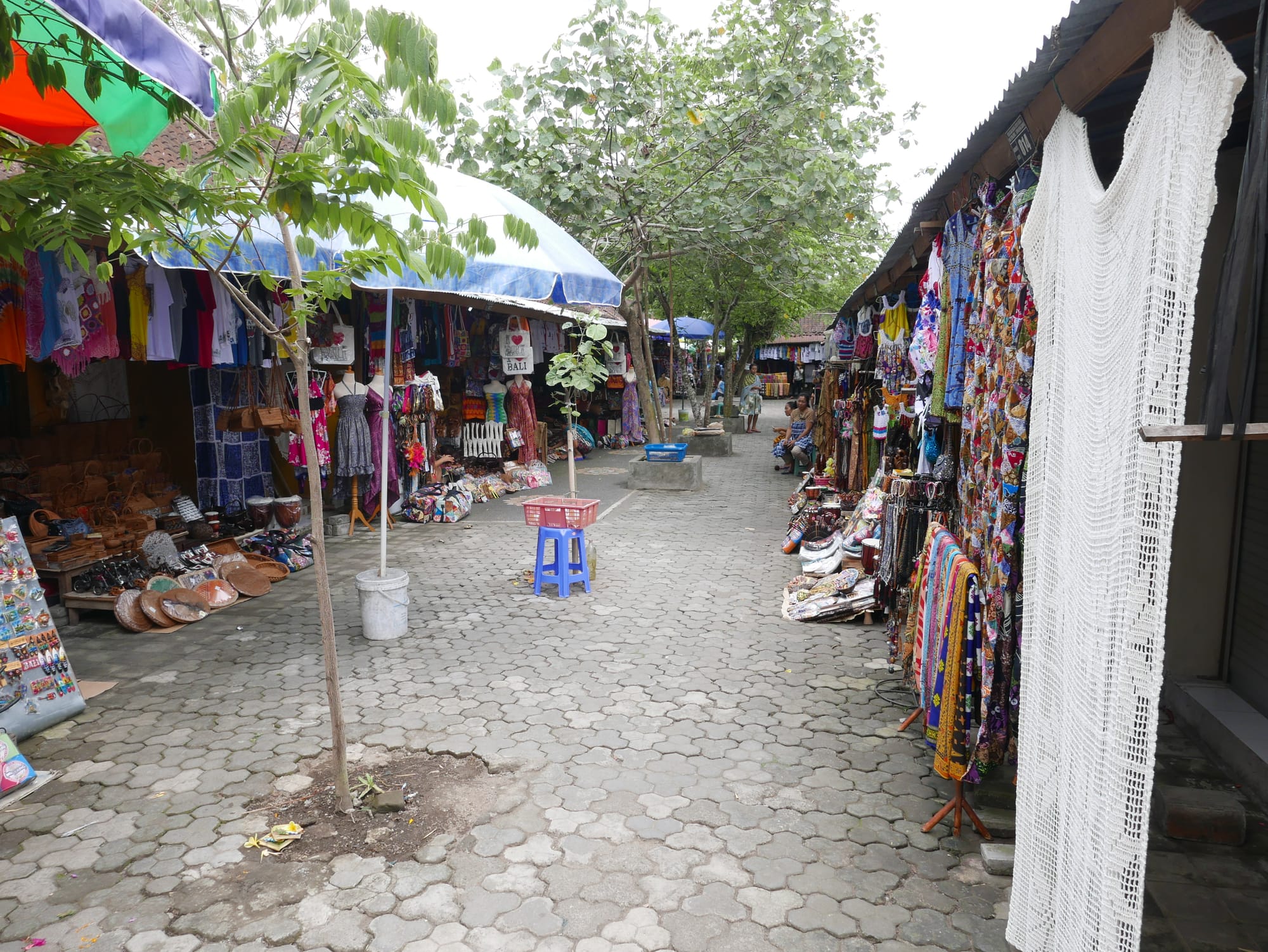
I enjoyed visiting Pura Tirta Empul (Tirta Empul Temple) as it was a real living place. Although very nice, the other temples I had visited in Bali felt dead, as there was no obvious sign of any worship. However, at Pura Tirta Empul (Tirta Empul Temple), it was evident that it was still a place of worship as there were bathers in pools, offerings, people in prayer and the religious parade.
If you only have time to visit one temple in Bali, make it the Pura Tirta Empul (Tirta Empul Temple).
FourSquare: Pura Tirta Empul (Tirta Empul Temple)
